The Bitcoin Ordinals Protocol Has Caused A Resurgence In Bitcoin Development And Interest
The Ordinals Protocol Has Caused A Resurgence In Bitcoin Development. The Bitcoin Ordinals Protocol Has Caused A Resurgence In Bitcoin Development And Interest
Ordinals is a new protocol that allows non-fungible-tokens (NFT) to be stored on the Bitcoin blockchain.
NFTs could be a good source of demand for block space while the digital asset “travels up the adoption curve as money,” and the probability of these tokens fueling bitcoin’s next bull run cannot be ignored, the report said.
Related:
The Ultimate Resource For The Bitcoin Miner And The Mining Industry
Ultimate Resource For Lightning Network Updates
What Are Lightning Wallets Doing To Help Onboard New Users?
Bitcoin Miners Made $14 Billion To Date Securing The Network
“Despite the loud critics from the more dogmatic side of the bitcoin ecosystem (some of which have gone as far as advocating for the censorship of transactions by miners), the benefits to the network have become immediately apparent,” wrote Sean Farrell, head of crypto strategy at FSInsight.
The blockchain needs to figure out a way to “create a sustainable demand for block space or hope that non-economic miners commit to securing the network,” the note added.
“The excitement surrounding NFTs on Bitcoin has brought new experimentation to the network, increasing average blocks sizes overnight, which translates to higher fees per block,” the report said.
FSInsight notes that there are concerns that the inscription of non-fungible data on the blockchain could cause bloat, but says that these concerns seem generally unfounded.
Updated: 2-14-2023
Out Of The Ordinal-Ry: Bitcoin Average Block Size Hits All-Time High
Bitcoin’s average block size has hit an all-time high of 2.5MB following the creation of the Ordinals protocol in January 2023.
Bitcoin’s average block size has hit all-time highs above 2.5 megabytes (MB) for the first time since its inception in 2009, driven by the launch of nonfungible tokens (NFTs) protocol Ordinals in January 2023.
Block size data from Blockchain.com reflects a jump in Bitcoin block size from the beginning of February 2023, increasing over 2MB in the weeks following the launch of the Ordinals Protocol.
As Cointelegraph reported, participants from the Bitcoin mining ecosystem have already made over $600,000 processing transactions of Ordinals, which have been dubbed as Bitcoin-based NFTs.
Software engineer Casey Rodarmor launched the Ordinals protocol in January, allowing the creation of Bitcoin “digital artifacts” on the network. These can comprise JPEG images, PDFS and video and audio files.
As Rodarmor outlines in the Ordinals documentation, these digital artifacts can be inscribed to an individual satoshi that makes up a whole Bitcoin. Each BTC is made up of 100,000,000 satoshis.
“Individual satoshis can be inscribed with arbitrary content, creating unique Bitcoin-native digital artifacts that can be held in Bitcoin wallets and transferred using Bitcoin transactions. Inscriptions are as durable, immutable, secure, and decentralized as Bitcoin itself.”
The Bitcoin community has been divided over the ability to inscribe digital artifacts to the blockchain, with arguments for and against providing plenty of food for thought. One of the major talking points has been the increased use of block space to inscribe various Ordinals.
Bitcoin’s average block size has hovered between 0.7MB and 1.5MB from July 2021 to February 2023. From Feb. 5 onward, Bitcoin’s average block size surpassed 2MB for the first time, currently sitting at around 2.2MB at the time of writing.
The inception of Bitcoin Ordinals has also seen the network hit a record 44 million non-zero addresses, as per data from Glassnode. Glassnode’s latest newsletter notes that Ordinals compete for block space demand but have not yet significantly impacted network fees.
Glassnode describes the advent of Ordinals as a “new and unique moment in Bitcoin history,” whereby innovation generates network activity without the “classical transfer of coin volume for monetary purposes.“
Bitcoin Miners Already Made Nearly $600K From Ordinals’ NFT Transactions
The Ordinals hype is real, with the NFT inscriptions now regularly taking over 50% of Bitcoin block space.
Bitcoin miners have earned nearly $600,000 in two months from a new controversial nonfungible token (NFT) protocol called Ordinals that has triggered a surge in user activity.
What are Bitcoin Ordinals?
Ordinals allow users to inscribe data in images and other media types in newly mined blocks on the blockchain that is otherwise largely used for peer-to-peer (P2P) monetary transactions.
Since the launch of Ordinals in mid-December 2022, users have inscribed nearly 74,000 NFTs into the Bitcoin blockchain, earning miners a cumulative $574,000 in BTC transaction fees to date, data from Dune Analytics shows.
These NFTs include “digital artifacts” stemming from clones of projects like CryptoPunks and the Bored Ape Yacht Club collection.
The NFT community is moving to BTC, where Ordinals have brought true scarcity to collectibles.
I forever inscribed “The Blonde Don” BAYC #1626 on the world’s scarcest and most secure chain burning him off ETH forever using TeleBurn.
It’s done. Over. Not coming back to ETH. pic.twitter.com/jmKpSSPybm
— Jason A. Williams (@GoingParabolic) February 12, 2023
Rising Demand For Bitcoin Block Space
The Ordinals protocol was made possible by Segregated Witness (SegWit) and Taproot, Bitcoin’s network soft fork upgrades from 2017 and 2021, respectively.
Similarly, the Taproot update helps batch and verify multiple transactions together as long as their size does not exceed 4 MB. This feature allows the inscription of data, such as images and videos, in Bitcoin blocks.
The advent of Ordinals has coincided with Bitcoin’s mean block size jumping from its typical average of 1.5–2 MB to between three and 3.5 MB in early February.
Simultaneously, the number of pending SegWit and non-SegWit blocks in the Bitcoin mempool has also increased significantly — the highest since the FTX collapse, as shown below.
On some occasions, Ordinals’ data has been comprising over 50% of Bitcoin block space, according to BitMEX Research.
“This describes a growth in the user base and an upwards pressure on the fee market from usage beyond the typical investment and monetary transfer use cases,” noted Glassnode in its weekly report, adding:
“Ordinals are a new frontier […] to observe how it affects and manifests in both on-chain network and investor behavior.“
Ordinals: BTC Miners’ New Revenue Stream?
Bitcoin miners generate most of their revenue from the network’s block subsidies, i.e., finding or “mining” new blocks. By comparison, the share of miners’ earnings from transaction fees is only about 3%.
Currently, the Bitcoin network rewards miners with 6.25 BTC per block. But this subsidy will drop by 50% to 3.125 BTC in spring 2024 in a halving event, which happens every four years.
As a result, the share of miners’ revenue from transaction fees is expected to rise over time as block rewards decrease.
To some, Ordinals introduce what’s called miner extractable value, or MEV, which has been previously associated with mining on Ethereum.
Simply put, MEV is the maximum value that miners can obtain from producing new blocks beyond the block rewards and transaction fees.
If Bitcoin Ordinals will take off (and I think it will) it’s really good news for Bitcoin mining companies’ revenue, something that’s not reflected in their valuations yet.
— Marc van der Chijs (@marcvanderchijs) February 6, 2023
Critics, however, argue that Ordinals is an “attack” that will price out the real financial activity and thus damage Bitcoin’s image as a reliable P2P payments network.
“Bitcoin is designed to be censor resistant,” said Adam Back, co-founder and CEO of Blockstream, adding:
“[It] doesn’t stop us mildly commenting on the sheer waste and stupidity of an encoding. At least do something efficient. Otherwise, it’s another proof of consumption of block-space thingy.“
Bitcoin Hits Record 44M Non-Zero Addresses, Thanks To Ordinals: Glassnode
Glassnode noted that this is the first time in Bitcoin history that the network has been used for purposes other than monetary.
The launch of Bitcoin nonfungible tokens (NFTs) — known as Ordinals — has tipped the number of non-zero Bitcoin addresses to a new all-time high of 44 million, according to crypto analytics platform Glassnode.
In a Feb. 13 report from Glassnode, the firm explained that for the first time in Bitcoin’s 14-year history, a portion of network activity is being used for purposes other than peer-to-peer monetary Bitcoin (BTC) transfers:
“This is a new and unique moment in Bitcoin history, where an innovation is generating network activity without a classical transfer of coin volume for monetary purposes.”
Glassnode explained that the Ordinals surge has contributed to a “short-term uptick in Bitcoin network usage of late” which has brought many “new active users” with a non-zero BTC balance to the network:
“The primary source of this activity is due to Ordinals, which instead of carrying a large payload of coin volume, is instead carrying a larger payload of data and new active users,” said Glassnode.
“This describes a growth in the user base […] from usage beyond the typical investment and monetary transfer use cases,” it added.
A New Player Competing For Block Space
Glassnode noted that Ordinals is now competing for block space demand, which is “creating upward pressure on the fee market,” but noted that this hasn’t led to a significant increase in Bitcoin transaction fees.
According to Glassnode, since Ordinals launched on Jan. 21, the upper range of the mean Bitcoin block size has increased from 1.5-2.0 MB to 3.0-3.5 MB in a matter of weeks.
However, this hasn’t led to a surge in fees. While there have been some short-lived spikes, Glassnode stated that a “new lower bound transaction fee required for block inclusion” has been reached since Ordinals made their mark on Jan. 21.
The technological applications behind the Ordinal protocol were enabled by the Taproot soft fork, which took effect in November 2021. Bitcoin Ordinals launched on Jan. 21.
Through the use of the Ordinals numbering scheme, Bitcoin users can assign arbitrary content to satoshis — the smallest denomination of BTC — which enables them to inscribe Bitcoin-native, nonfungible token (NFT)-like images.
There have been over 78,400 NFT-like images and videos inscribed thus far.
Some notable “Bitcoiners” such as Blockstream CEO Adam Back have recently expressed their dislike for the Ordinals protocol, suggesting that it deviates from Bitcoin’s purpose as a peer-to-peer electronic cash system.
However, others have been more open to the idea. Bitcoin bull Dan Held has asserted on several occasions that Ordinals bring more “financial use cases to Bitcoin.”
There has been a lot of noise and questions recently about Ordinal Inscriptions.
So what are they? The simple answer is that ordinals are non-fungible tokens (NFT) you can mint on the Bitcoin blockchain.
But Orindal Inscriptions aren’t your usual NFTs. Unlike Ethereum NFTs, which depend on off-chain metadata that can be modified, Ordinal Inscriptions enable all data to be inscribed directly on-chain.
It was this flaw in Ethereum NFTs that caused software engineer Casey Rodarmor to deem Ethereum NFTs incomplete and launch the Bitcoin Ordinals protocol.
Those in favor of change believe Ordinal Inscriptions could cause an important shift in the bitcoin community and improve the technology behind NFTs.
Yet, many questions I’ve been receiving from clients boil down to, “is this good or bad for bitcoin?” and “will this disrupt the usability of it.”
Bitcoin NFTs Challenge The Blockchain’s Largest Use Case: Money
The Bitcoin community has been abuzz with conversations around how Ordinal Inscriptions could signal a technical improvement to NFTs.
But the increased fees and transaction speeds associated with them could stifle Bitcoin’s primary use case as a medium of exchange.
A Case Against Change?
Despite the potential benefits of Ordinal Inscriptions, there has been a lot of debate over whether they are a “good use” of block space.
The challenge has been that as more Ordinals are being inscribed, the cost of bitcoin transactions has risen. That’s because Ordinals introduce additional, non-financial data on the Bitcoin blockchain that bog down on-chain confirmation times. This includes images, audio clips, even games.
Those not in favor of Ordinals see this as an impediment to the ability of Bitcoin to scale and reach full global adoption.
Inscribing non-fungible characteristics to satoshis, the individual increments of bitcoin, may challenge bitcoin’s use case as first and foremost money.
Ordinals challenge the fungibility of satoshis in the Bitcoin network. All satoshis should be equal or they begin to lose a significant trait of money.
But Ordinals can alter the value of these units of money. Take rare collectible coins as an example: While a penny may have a face value of exactly 1 cent, its design and mint year could make it worth a dollar or more in the eyes of some beholders.
This debate over whether these individual units must be deemed equal is unfolding before our eyes, and I think it needs to be understood.
Bitcoin is money, and that’s the largest and most important use case, impacting the most people in the world. Which is why I believe that Ordinals and other use cases both known today and yet to emerge will remain niche.
I view this as an exciting period – but one that, as many fads do, will fade. I don’t see Ordinals being the desire for many to use Bitcoin’s block space.
Bitcoin is money. In my opinion, any changes to the protocol should be slow and methodological.
Ultimately, The Markets Decide
One of the biggest yet baseless claims I often hear is how Bitcoin doesn’t evolve or change.
Now, are there kernels of truth in that? Sure. You don’t “move fast and break things” when working to build the next global monetary system; we’ll leave that for VC start-up tech firms.
However, there have been some upgrades that demonstrate the need and merit of change. The Lightning Network, for example, could accelerate bitcoin commerce and everyday use.
Inscriptions are yet another example of attempts to change the blockchain. Inscriptions became eligible in bitcoin blocks with the most recent upgrade to the protocol called Taproot.
Ultimately, the beautiful thing about Bitcoin is that it’s permissionless and the ultimate free market for uses. And this is what fosters change.
At the same time, free and open markets will dictate if Ordinals are demanded and are valuable. The permissionless nature of Bitcoin allows for this competition to play out.
Ordinals may stick around if individuals want to see them become a mainstay in Bitcoin. Bitcoin is governed by consensus rule – which is why running a node is essential and why the “blocksize war” was foundational for Bitcoin.
Ordinals are not an attack on Bitcoin but could begin conversations again with a hard or soft fork. I view a hard fork as Ordinals’ most painful and trying outcome.
The Advisor Takeaway
As an advisor with clients with bitcoin and questions on Ordinals, the most significant takeaways revolve around what makes bitcoin unique. Most, if not all, other cryptocurrencies are decentralized in name only – Bitcoin is not.
But due to the decentralized nature of Bitcoin, developers are free to modify Bitcoin’s current rule set. If demand is there and the modifications result in splits in bitcoin holders and the community, investors will have a choice over what to do with their money.
If we see a hard fork, any new tokens or projects would accrue to clients and they could then decide if they want to hold, sell or buy.
While it might seem scary, I doubt Ordinals will create that much friction and division within Bitcoin. Even if it did, one could be passive and simply let the market forces play out. Being an open, permissionless protocol allows for moments like this to occur, and that’s healthy in the long term.
Regardless of opinions of “right” or “wrong,” seeing the conversations and debates happening about Ordinals is good. It allows bitcoin to test its resilience and robustness. We will continue having these conversations as Bitcoin proceeds on its path toward global adoption.
Updated: 2-17-2023
Bitcoin Ordinals Can Lift The Entire Crypto Ecosystem
The arrival of the Ordinals Protocol, which allows for the creation of Bitcoin NFTs, has coincided with a big jump in the price of Bitcoin. Add that to the SEC’s exemption of Bitcoin from the label of security, and we see a bullish bitcoin picture emerging.
Let me posit two reasons why, over the past month, bitcoin has surged to its highest level since mid-August and outperformed every other major asset in both crypto and traditional markets.
Together, they highlight the unique advantage that Bitcoin draws from its status as the oldest, most established and most decentralized protocol and from a surprising new opportunity to harness that.
The arrival of the Ordinals Protocol, which enables users to inscribe references to digital art into small transactions on the Bitcoin blockchain, essentially creating Bitcoin-based non-fungible tokens. This has demonstrated a new, high-value use case for the longest-running cryptocurrency chain.
Already, one report from research firm FSInsight argues that an Ordinals-driven resurgence in development and the expansion in the total value transacted and secured over the Bitcoin blockchain should drive up its price.
A string of U.S. regulatory actions has highlighted the risks that many, if not all, major non-Bitcoin blockchains will fall afoul of the Securities and Exchange Commission Chairman Gary Gensler’s hardline position that most tokens are securities.
It appears bitcoin is the one reliable exception to that. That’s making it attractive in relative terms to Ethereum’s ether, Solana’s SOL and all others.
Many “maxis” might celebrate this moment as proof that their beloved Bitcoin is proving itself as the one and only – except perhaps those who see the addition of “JPEGs”to its blockchain as an abuse of Satoshi’s original intent to form a new system of money.
But I’ve never thought it constructive to view the crypto landscape through the maxis’ zero-sum-game lens. And right now, while it might seem as if they should be running a victory lap, it’s possible to look at that same landscape and see a much more integrated, constructive future for all crypto protocols emerging out of this moment.
Layer 0
Over time, I see a situation emerging in which Bitcoin functions as a kind of uber-anchor for everything. Its role will be to be a kind of ultimate “layer 0” record of truth.
Meanwhile, Ethereum and other smart contract platforms could take on higher-level functionality, with each specializing in different types of transactions and data-processing that the rather clunky, limited-function Bitcoin blockchain is not built to perform.
It will need greater cross-chain operability, but there are plenty of people working on that.
Most other layer 1 crypto protocols – meaning base-layer blockchains with their own native tokens – are based on a proof-of-stake consensus mechanism, including Ethereum.
With the Securities and Exchange Commission shutting down Kraken’s staking service in the U.S., signaling that it will be difficult for all but the most sophisticated retail U.S. investors to participate in those blockchains’ validating networks, investing in ether and other such tokens seems poised to become the domain of institutional players.
This is not ideal – especially because of the risk of censorship and regulatory capture that comes from centralizing staking pools in corporate hands.
But here’s where, in a world of integrated, interoperable cross-chain transactions, Bitcoin’s base layer of immutable record-keeping could act as protection against such threats.
Bitcoin’s wide, geographically dispersed community of users and miners ensures that governments will have a hard time shutting it down.
The fact that Satoshi’s absence has left authorities with no lead developer to subpoena also puts this in a different realm from all the other protocols for whom there are mostly identifiable founders.
The bottom line is that Bitcoin has proven to be sufficiently decentralized that U.S. authorities have conceded that the leading cryptocurrency is not a security. In this new, politically tense environment, this gives it a distinct advantage.
Bitcoin Finds A New Community of Innovators
It’s also why the Ordinals Protocol is so important. The Bitcoin blockchain now has a purpose beyond peer-to-peer payments, whose mainstream appeal has always been undermined by regulation of the on- and off-ramps to the banking system and by bitcoin’s own price volatility.
Now that it incorporates NFTs – the most important crypto innovation since Bitcoin itself – the Bitcoin blockchain is engaging with creators of digital content, the backbone of the internet economy. That will unleash a torrent of new creative innovation in the space.
As that happens, it will drive others in the crypto community to build better bridges and integrations between Bitcoin and alternative protocols.
It could accelerate the work already being done by developers working on Cosmos, Polkadot, Polygon and other bridging and interoperability protocols to build mechanisms for moving assets across chains and reduce crypto industry participants’ dependencies on singular layer 1 blockchains.
Already this week, the NFT Capsule team at blockchain services company Bloq launched “Ordinary Oranges,” a collection of Bitcoin-inscribed NFTs that are accessible on the Ethereum mainnet and have a “burn” option that returns the NFT to the Bitcoin chain.
The beauty of such arrangements is that users can have the security of a Bitcoin-proven asset while also tapping the greater programmability of decentralized applications and layer 2 protocols running on the Ethereum virtual machine, as well as the deeper liquidity that exists in Ethereum-based NFT marketplaces such as OpenSea.
I see these kinds of developments leading to a more integrated crypto ecosystem in which different protocols perform different functions, with all of it anchored into a 15-year-old deeply established proof-of-work blockchain that no U.S. regulator can shut down.
Updated: 2-18-2023
How The Ordinals Movement Will Benefit The Bitcoin Blockchain
The increasing popularity of Bitcoin NFTs, or Ordinals, will positively impact the Bitcoin network’s security and attract developers to the ecosystem, according to Ordinals proponent Udi Wertheimer.
According to independent developer Udi Wertheimer, Bitcoin non fungible tokens (NFTs) will positively impact the ecosystem by improving its security and incentivizing developers to build on the network.
The number of newly created Ordinals has been spiking in recent weeks, causing a surge in transaction fees and average block size on the Bitcoin blockchain.
According to Wertheimer, Bitcoin NFTs are going to be beneficial for Bitcoin’s security budget. By driving up transaction fees, the creation of Ordinals will incentivize miners to secure the network while the revenue from mining rewards will decrease with each Bitcoin halving.
“Because the block space is scarce and because there’s demand for stuff like inscriptions, there’s a lot of hope that we will get enough people who want to pay fees in order to keep the Bitcoin network secure,” Wertheimer explained in a recent interview with Cointelegraph.
Also, Wertheimer noted, Ordinals provide a new use case to make building on Bitcoin commercially profitable.
“With all of that interest around Ordinals and inscriptions, I expect that there is going to be a very big ecosystem that is built around that,” he said.
Wertheimer dismisses the notion held by some Bitcoin core developers that creating NFTs is not an appropriate use case for Bitcoin. According to him, in recent years, Bitcoin core developers “have ignored what actual Bitcoin users want.“
Updated: 5-3-2023
Bitcoin BRC-20 Token Standard Becomes New Destination For Meme Tokens
The BRC-20 token market cap has seen a 600% rise in the past week, with its transaction volume overtaking standard BTC transactions on the network.
Bitcoin’s BRC-20 token standard has become the latest trend in the crypto ecosystem, especially after the Pepe (PEPE) memecoin rise in recent months.
A total of 8,500 different tokens have been minted using the BRC-20 standard, with the majority of these BRC-20 tokens being memecoins, such as PEPE and Memetic (MEME).
BRC-20 is an experimental token standard on the Bitcoin blockchain modeled on Ethereum’s ERC-20. It allows programmers to create and send fungible tokens via the Ordinals protocol.
Although modeled after ERC-20, the BRC-20 token standard fundamentally differs from its Ethereum-based counterpart. BRC-20 tokens don’t make use of smart contracts. The token standard also requires a Bitcoin wallet to mint and trade these tokens.
The BRC-20 token standard was created early in March by an anonymous on-chain analyst called Domo. The objective was to make it possible for fungible tokens to be issued and transferred on the Bitcoin blockchain.
The market cap of BRC-20 tokens has exploded over the past month and currently sits at $120 million, a 600% rise in the past week.
The BRC-20 token frenzy has also dwarfed the blockchain’s original number of Bitcoin transactions. The number of BRC-20 transactions on the Bitcoin blockchain between April 29 and May 2 reached over 50%, outperforming regular BTC transactions.
The BRC-20 token volume peaked on May 1 at 366,000 transactions, with the total number of transactions on the network being 2.36 million.
Along with the rise in BRC-20 transactions, transaction fees have surged due to the new token activity. Since its inception in late April, the network has generated an additional 109.7 BTC in transaction fees for miners.
The memecoin frenzy has been a notable topic on the Ethereum blockchain, but with the rise of the BRC-20 standard, a similar trend is also observed on the Bitcoin blockchain. The memecoin craze has also led to a significant rise in Ethereum network gas fees, contributing to network congestion.
Updated: 5-3-2023
Bitcoin Miners Have Earned $50B From BTC Block Rewards, Fees Since 2010
They may have seen some hard times, but overall, estimates conclude that Bitcoin miners are up 37% from their activities.
Bitcoin miners have profited roughly 37% from mining Bitcoin since its inception, new data reveals.
Calculations from on-chain analytics firm Glassnode suggest that since 2010, fees and block reward subsidies have netted miners over $50 billion.
Bitcoin Miner Revenue Passes $50 Billion Mark
Amid an ongoing debate over miner costs and susceptibility to Bitcoin price dips, new figures suggest that miners are firmly in the black in the long term.
According to Glassnode, miners’ total all-time income is almost 40% higher than their estimated costs, coming in at $50.2 billion versus $36.6 billion, respectively.
Researchers generated the numbers using two metrics: thermocap and transaction fees, which are “the cumulative sum of issuance multiplied by spot price in addition to all-time generated fee revenue” and difficulty production cost.
In a dedicated report in late March, Glassnode explained the nuances behind the calculations while arriving at the 37% profit margin still in place today.
“In this model, the Thermocap and Transaction Fees can be considered the realized revenue by miners, whilst the Difficulty Production Cost is considered the aggregate mining input expense,” the report explains.
The results counter fears that too low a BTC/USD price could spark mass capitulation across the mining industry, which continues to grow.
Bitcoin network fundamentals support the argument, with difficulty and hash rate both hitting new all-time highs throughout 2023.
Current estimates from BTC.com, however, predict that this week’s difficulty adjustment will be the first negative one for Bitcoin since mid-February, 2023.
Bitcoin Transaction Fees Spike Higher
Meanwhile, an influx of newly-created unspent transaction outputs (UTXOs) thanks to ordinals is rapidly making on-chain transactions less appealing this month.
Glassnode shows these created UTXOs spiking to their highest levels since 2015 in May, with fees rising accordingly.
Blockchain.com has the 1-day moving average transaction fee rate at $6.91 for May 2 — more than at any time since July 2021.
Updated: 5-4-2023
Bitcoin’s Frenzy of Activity Pushes Average Transaction Fee Over $7, Nearly 2-Year High
The average transaction fee on Bitcoin has shot above $7, pushing total fees up nearly fivefold in two weeks, thanks to a surge in Ethereum-style “BRC-20” tokens and NFT-like “inscriptions” on the increasingly popular Ordinals project.
A spike in transactions on the Bitcoin blockchain involving Ethereum-style tokens and non-fungible token (NFT)-like “inscriptions” has driven up congestion on the network, pushing the average fee rate to the highest in nearly two years while showering miners of the cryptocurrency with extra revenue.
On Wednesday, the average fee per Bitcoin transaction rose to $7.25, the highest since July 2021. For comparison, the rate so far this year had fluctuated between roughly 50 cents and $4, data from BitInfoCharts shows.
With transaction activity also surging, total fees on Bitcoin have also jumped.
Per blockchain analytics firm Glassnode, Bitcoin’s total transaction fees, which are paid by users to miners, jumped to around 124 BTC or roughly $3.5 million, on May 3, representing a 484% increase in the past 14 days.
“This current fee spree is an anomaly,” wrote Colin Harper, head of content at Luxor Technologies, a full-stack Bitcoin mining pool.
In recent days, a token type called BRC-20 (a play on Ethereum’s ERC-20 token standard), which facilitates the issue and transfer of fungible tokens on the Bitcoin blockchain, has accounted for about 6% of all Bitcoin activity since its inception in early March, according to pseudonymous analyst and yield farmer Dynamo DeFi.
This year has also seen the rise of Ordinals inscriptions, which are similar to NFTs and could be images or text strings inscribed into Bitcoin-based transactions. Both activities require transaction fees.
“Inscriptions are the primary driver here,” said Harper. “Biggest difference now between this jump in transaction fees and past ones with inscriptions is that BRC-20 standard is a new way to inscribe. Adoption of this standard is driving fees up.”
“The increase in transaction volume of that token standard has driven up demand for Bitcoin blockspace,” said Jimmy Zhang, who works in the business operations and strategy department at blockchain data firm Artemis.
Kydo, vice president of Stanford Blockchain Club, told CoinDesk via direct messages on Telegram that “Blockspace is the core commodity on any blockchain.
People have found a new use case and the usage skyrocketed. BTC is more than money now.” Kydo said they only use the one name publicly because of privacy concerns.
Miners who secure and maintain the Bitcoin network are beneficiaries of the recent increase in BTC transaction fees because they are rewarded in BTC fees for processing users’ transactions.
Harper predicts the increased transaction fees currently occurring in the ecosystem are “a temporary phenomenon, though, and that transaction fees will revert back to a manageable mean soon.”
Kydo said they think the current phenomenon will last a while, “given how much people like NFTs.”
The price of BTC has increased 1.2% in the past 24 hours to $28,884, at press time. The average transaction fee on Bitcoin is $7.25.
According to data website cryptofees.info, Bitcoin’s seven-day average fee stands at roughly $2 million, second only behind Ethereum’s $12.5 million. BNB Smart Chain is next with about $575,000.
Updated: 5-5-2023
Bitcoin Perpetuals Seen Becoming An Even Bigger Driver Of Prices
* Bitcoin Perps-To-Spot-Volume Ratio Is Highest In About 2 Years
* Where Volumes Are, The More Influence On Price There Is: Kaiko
Bitcoin perpetual futures, one of the most popular derivatives contracts in crypto markets, are increasingly driving the largest digital token’s price.
That’s according to Conor Ryder, research analyst at Kaiko, who points out that the Bitcoin perpetuals-to-spot-volume ratio is at its highest in nearly two years.
Perps, as they’re sometimes known in industry parlance, don’t expire and have been hugely popular with traders as the derivatives market is a place where a lot of speculation can occur, according to the researcher.
“It’s a question of price discovery i.e. where the true price of an asset is actually determined. That is historically correlated with volumes, so wherever the majority of volumes are, the more influence that has on price,” Ryder said.
“Perps have a larger share of volumes compared to spot, and the theory is that more and more price discovery is happening in perp markets, with long/short pressure having more of an influence on prices.”
The perpetual contract was first introduced by crypto exchange BitMEX in 2016. Exchanges use the so-called funding rate — or the cost to trade — to tether the contracts to their underlying spot price.
When the rate is positive, those who hold long positions are paying interest to investors who are short, and vice visa.
When Binance, the largest exchange, last year introduced zero-fee trading for certain trading pairs, spot volumes shot higher. However, volumes have dropped off since the company decided to do away with a majority of the program.
In the meantime, perpetuals futures have commanded more of the market, seeing six times the volumes versus spot markets, Ryder estimates.
As an example of how derivatives can be a force on prices, Kaiko points to a “huge” buildup of nearly $2 billion of open interest for Bitcoin futures in mid-April. That came amid positive funding rates.
“We can conclude that speculative long positions drove this rally and the positive price action seemed to top out as soon as funding rates flipped negative,” Ryder said. Meanwhile, he also points to trends in the options market — every spike in April was dominated by calls, which sometimes hit 70% of volumes.
Call options give the purchaser of the contracts the right to buy an asset at a set price within a specific period of time.
“As of today, that share is around 60%,” he said, “suggesting continued bullish sentiment among options investors.”
Memecoin Hype Drives Bitcoin Transaction Fees To Multi-Year Highs
Despite the latest spike in Bitcoin transaction fees, the current BTC transaction cost is still far from all-time high levels.
Bitcoin transaction fees surged in early May, reaching their highest point over the past two years, according to data from Crypto Fees.
On May 3, the total amount of fees paid on the Bitcoin blockchain reached $3.5 million, jumping about 400% from late April.
The average Bitcoin transaction fee reached as much as $7.2, according to YCharts.
The ongoing trading frenzy of memecoins like Pepe Coin (PEPE) has triggered an unwanted consequence for Bitcoin — driving its transaction costs to multi-year highs.
The latest increase in BTC transaction fees is primarily attributed to a surge in Bitcoin activity involving BRC-20 transactions.
According to data from Galaxy Research, 50% of all Bitcoin transactions on May 2 were related to BRC-20 transactions.
Modeled after Ethereum’s ERC-20 token standard, BRC-20 is an experimental token standard allowing users to issue and transfer fungible tokens on the Bitcoin blockchain. The standard was introduced in March 2023 by a pseudonymous on-chain analyst known as Domo.
The BRC-20 token standard has quickly become a major trend in the cryptocurrency industry, specifically amid the sharp growth of the PEPE memecoin.
The token has rallied more than 600% over the past seven days, reaching its all-time high of $0.00000216 on May 5.
The Bitcoin blockchain isn’t the only blockchain affected by the ongoing memecoin hype. Gas fees on the Ethereum blockchain have also been skyrocketing to new multi-month highs recently.
On May 2, ETH transaction fees hit an aggregate amount of more than $19 million, a level not seen since May 2022, according to Crypto Fees. The Ethereum blockchain remains the most expensive network in terms of transaction fees at the time of writing.
Despite the latest spike in Bitcoin transaction fees, the current BTC transaction cost is still far from all-time high levels. The highest Bitcoin transaction fees were recorded in April 2021, when the average BTC transaction cost almost reached $70 amid a major decline in the Bitcoin network hash rate. The previous highest point in BTC transaction fees was in 2017, with transaction costs surging above $60.
Updated: 5-7-2023
Bitcoin Network Congestion Causes Binance To Pause Withdrawals
The world’s biggest crypto exchange has now resumed withdrawals, but problems continue to linger for the Bitcoin protocol.
Binance, the world’s largest crypto exchange, temporarily paused bitcoin (BTC) withdrawals Sunday morning U.S. time as the Bitcoin blockchain became overwhelmed with pending transactions and sky-high fees.
The company resumed withdrawals within two hours of its initial Twitter posting about the withdrawals.
On-chain data shows that there are nearly 400,000 unconfirmed Bitcoin transactions, which is higher than anything seen during the bull runs of 2018 and 2021.
“This current fee spree is an anomaly,” CoinDesk previously quoted Colin Harper, head of content at Luxor Technologies, a full-stack Bitcoin mining pool. “Biggest difference now between this jump in transaction fees and past ones with inscriptions is that BRC-20 standard is a new way to inscribe. Adoption of this standard is driving fees up.”
Bitcoin ordinal inscription tokens, known by its BRC-20 standard designator, currently have a market cap of $482 million across 14,000 tokens.
Bitcoin is currently trading at $28,935, down 0.15% in the last 24 hours.
Updated: 5-7-2023
Binance Says It’s Integrating Lightning Network
The second pause came less than eight hours after the first.
Binance has once again resumed bitcoin (BTC) withdrawals after a second pause, as the Bitcoin network suffers from unprecedented congestion.
$BTC withdrawals are now resumed on #Binance.
Pending transactions are being processed by replacing them with higher transaction fees.
We’ll post another update once these pending transactions are all processed.
— Binance (@binance) May 8, 2023
Binance briefly paused bitcoin withdrawals for around two hours Sunday afternoon U.S. time as the number of unconfirmed transactions hit a record high. Its second pause, taking place Sunday evening U.S. time, was also for just over two hours.
“To prevent a similar recurrence in the future, our fees have been adjusted. We will continue to monitor on-chain activity and adjust accordingly if needed,” Binance said in a tweet. “Our team has also been working on enabling BTC Lightning Network withdrawals, which will help in such situations.”
To prevent a similar recurrence in the future, our fees have been adjusted. We will continue to monitor on-chain activity and adjust accordingly if needed.
Our team has also been working on enabling BTC Lightning Network withdrawals, which will help in such situations.
— Binance (@binance) May 8, 2023
The number of unconfirmed transactions was approaching 500,000 when the second halt took place, from around 400,000 when the first pause occurred. It is now beginning to decline, and is currently just over 430,000 over a 12-hour period.
The price of bitcoin continues to drift downward and is now at $28,240, down 2.6% in the last 24 hours.
CoinGecko data shows Binance has significantly slid in its position for bitcoin trading volume and is no longer in the top 10 exchanges for bitcoin trading pairs.
Updated: 5-9-2023
Bitcoin Fee Spike Spurs Shift To Lightning Network — Binance And Coinbase Line Up
Binance announces plans to embrace the Lightning Network. Which large crypto exchanges are Lightning ready, and which are yet to be struck?
The recent surge in Bitcoin transaction fees has lit a fire under one of the largest crypto exchanges to upgrade to the Bitcoin Lightning Network.
Following a second halt in withdrawals, Binance announced it would work on “enabling BTC Lightning Network withdrawals, which will help in such situations.”
The Lightning Network (LN) is a federated system for cheap, near-instant payments built atop Bitcoin. When the Bitcoin mempool (where transactions waiting to be confirmed gather) is full or busy, the Lightning Network is unaffected.
Several large crypto exchanges have integrated the Lightning Network, including Bitfinex, River Financial, OKX, Kraken and CoinCorner.
If implemented correctly, the Lightning Network would allow users to withdraw and send Bitcoin immediately from wallets, sidestepping the congested Bitcoin blockchain.
Fees on Bitcoin are rising, and there are still many Bitcoin (to fiat) exchanges that haven’t adopted Lightning deposits and withdrawals
Technical challenges are not the reason. Solutions like @RiverRLS exist that make integration fast and easy for any business. The issue is… pic.twitter.com/WR5u7cjMCx
— Sam Wouters (@SDWouters) May 8, 2023
The largest crypto exchange in the United States, Coinbase, is also warming up to the LN. Further to comments that CEO Brian Armstrong would integrate the LN soon, Armstrong finally sent Cointelegraph reporter Joe Hall $100 over the Lightning Network, demonstrating that he is familiar with the layer-2 payments protocol.
European Bitcoin exchanges are also embracing the LN. Adem Bilican, the chief technology officer of Swiss-based Bitcoin exchange, Relai, told Cointelegraph:
“We believe that Bitcoin is the best savings technology ever invented. But you should be able to spend and send BTC as fast and cheaply as possible. The Lightning Network is the best solution to tackle that, no matter how the on-chain transaction fees look.”
Swiss Bitcoin exchange Pocket Bitcoin recently tweeted it would “get this Lightning thing started” in response to higher and higher fees on the Bitcoin base chain.
However, given that the LN is a relatively new solution in the crypto space, payment failure can occur. The network is growing and scaling organically, but more liquidity may help the network scale faster. Paolo Ardoino, chief technology officer of Bitfinex, shed light on the situation:
“The Bitfinex node is the most interconnected node on the entire Lightning Network. It is also the biggest, providing liquidity to most of the other nodes. Hence the chances of failure are extremely low.“
True to form, Ardoino tweeted in response to the high fees that users should ask their crypto exchange to integrate LN. Binance and Coinbase are hopping on board, with other large exchanges Gemini, KuCoin and Bybit yet to announce implementing the LN.
There’s No Such Thing As High Fees On Bitcoin
Bitcoin’s BRC-20 debate is a re-run of the 2015-17 blocksize wars, except this time some of the combatants have changed sides, says Nic Carter.
Veterans of the blocksize war that raged from 2015 to 2017 in Bitcoin were met with a curious sight this week: Bitcoiners complaining about high fees. If this doesn’t strike you as odd, it’s worth recalling some brief history.
Historically, “small-blockers” – the faction that retained the claim to Bitcoin in the blocksize wars – have supported the existence of fees during times of congestion as a necessary tradeoff to achieve decentralization.
Big blockers – the faction that split off into BCH and BSV – were the ones aiming to keep fees low. But this trend has reversed for some Bitcoiners recently.
Famously, big-block (and low fee enthusiast) Roger Ver lamented five years ago that “babies [were] dying” because Bitcoin core devs refused to raise the block limit (and alleviate fees).
Central to the big blocker talking point was that more block space was required in order to accommodate more transactions.
This would in theory drive down fees and make it easier to scale a blockchain to global usage for all manner of small payments.
The small blockers, by contrast, preached the importance of restraint, and sought to keep the blockchain as compact as possible, so that it might remain maximally decentralized and censor resistant.
A larger blockchain, the thinking went, would only be maintained by industrial node operators, and could thus be trivially co-opted by state or corporate actors.
In the scaling wars, instead of naively increasing block space to ease the fee pressure in the short term, Bitcoiners embraced instead a layered philosophy.
In 2023, it’s 2017 again, except this time many hardcore Bitcoiners have flipped and are now embracing the ‘fees should be low’ perspective.
This is in fact how all payment systems scale: by deferring settlement. You don’t use wire transfers to pay for cigarettes – you use a network like Visa which uses batched, deferred settlement and ultimately settles to partner banks via ACH.
You would typically reserve wire payments for larger transactions like down-payments on a house where finality is important.
Indeed, I’ve been sympathetic to the small blocker philosophy, and that’s why I supported Bitcoin over Bitcoin Cash, and that’s why I’m generally skeptical of the approach taken by blockchains like EOS or Solana.
Accepting smaller blocks means tolerating larger fee spikes when the blockchain gets busy.
Historically, large blockers used times of blockchain congestion as evidence in their favor, and Bitcoiners were forced to grit their teeth and resort to more philosophical arguments as to why the convenience wasn’t worth the tradeoff in terms of decentralization.
In 2017, Gregory Maxwell, arguably the most influential developer on the small block side of the conflict, “popped the champaign (sic)” when Bitcoin fees topped the block reward for the first time.
In 2023, it’s 2017 again, except this time many hardcore Bitcoiners have flipped and are now embracing the “fees should be low” perspective – one that they (or their antecedents) explicitly fought against during the scaling wars.
The culprit is, ironically, Bitcoin’s own Taproot upgrade, which (perhaps unintentionally) opened up a new design space which permitted users to inscribe arbitrary content on the blockchain.
Image NFTs (“Ordinals”) have stolen most of the attention, but the immediate catalyst for this spike was actually the creation of the BRC-20 standard, which relies on an exotic distribution method.
BRC-20s are issued with a “proof of burned fee” mechanic, in which users must sacrifice transaction fees in order to create new tokens. This has driven fees in the short term to eye-watering levels, pricing out other sorts of conventional usage.
Some Bitcoiners have even taken to calling the usage of the blockchain a deliberate “denial of service” attack or an attack on El Salvador’s Bitcoin mission.
The good news is that fee spikes generally don’t last. If history is any guide, the current mania for minting BRC-20 tokens will likely fade relatively quickly. It looks to me to be an event similar to the Otherside mint on Ethereum rather than anything enduring.
However, it’s certainly the case that Ordinals and Inscriptions have unlocked a huge amount of latent demand for Bitcoin blockspace, and entered us into a new, structurally higher fee regime, even if this acute spike will fade in a matter of days.
Bitcoin maximalist ideology has become highly reactive, technologically regressive, and more concerned with ideological purity than intellectual coherence.
The BRC-20 mania, as perplexing as it is to many, is one of the best things that has happened to Bitcoin in some time.
For the few small blockers that have remained intellectually consistent from 2017 to today, the new fee pressure ought to be welcomed.
It’s a catalyst for the further adoption of established L2 networks like Lightning, and where Lightning falls short, alternative L2 systems.
As with all commodities, high prices are the cure for high prices. As a venture capitalist, I’m encouraged by the entrepreneurs I have been meeting lately who have begun designing novel L2s that explore alternative design spaces. In particular, rollups have clear product market fit on Ethereum, and I’m hopeful they can be added to Bitcoin in time.
Lightning is not a panacea, and it is best suited for high frequency, small granularity payments – which certainly doesn’t satisfy all types of Bitcoin transactional demand. There’s more than just one way to move dollars around – we have wires, ACH, credit and debit networks, Fednow, physical cash, remittances, hawala networks, money orders, and fintech apps, among others.
More abstractly, these can be divided into “push” and “pull” approaches, real time versus deferred settlement, and gross versus net settlement models. Each has its own set of tradeoffs, and offers different transactional speeds and settlement assurances.
It’s naïve to think that one scaling network alone can satisfy the diverse transactional needs of Bitcoiners. The long term future for Bitcoin is a plurality of scaling approaches.
The gist, however, is a move away from the one-baselayer-settlement = one-payment model, towards a more economically dense, one-baselayer-settlement = many-payment model.
This is the right way to scale. This is the only way a broadcast system like a blockchain, where every node operator must be aware of every transaction, can scale to global usage.
The burst of activity around inscriptions and resulting high fees is an accelerant towards this more efficient future, and it should be celebrated. The BRC-20 mania, as perplexing as it is to many, is one of the best things that has happened to Bitcoin in some time.
Updated: 5-11-2023
Bitcoin Fees Plummet 95% As BTC Price Recovers From US Gov’t Scare
Bitcoin was not subject to U.S. government selling this week, analysis shows, but BTC price action remains pressured.
Bitcoin struggled to recover from fresh losses on May 11 as a false alarm over United States government sales spooked markets.
Next-Block Bitcoin Fee Dips Under $2
In a silver lining for Bitcoiners, the past 24 hours saw a major shift in on-chain transaction fees, these deflating considerably after reaching levels that had caused a widespread uproar.
Live numbers from Mempool.space had next-block fee rates at 47 satoshis ($1.80) per byte at the time of writing.
According to data from monitoring resource BitInfoCharts, on May 10, the average fee fell below $15 — a drop of over 50% from the previous day.
Reacting, Checkmate, lead on-chain analyst at Glassnode, took to task those who had called for code-changing measures to prevent fees from rising so heavily in the future.
As Cointelegraph reported, fees had surged due to Ordinals inscriptions massively increasing on-chain activity and demand for block space.
“24hrs later, the average fees paid per block has returned to ~1.0 $BTC per block. Imagine arguing to change Bitcoin rules for a short-term fee spike due to people using the chain in ways you don’t agree with,” he tweeted alongside a chart.
“Trying to change the rules is the attack, not the inscriptions.”
Updated: 5-17-2023
Lightning Labs Launches Updated Protocol To Help Solve Bitcoin’s BRC-20 Issues
Lightning Labs has unveiled a new solution to the clunky process of minting new assets on the Bitcoin network.
Bitcoin users have been given a possibly more efficient way to mint new assets on the blockchain after an updated edition of the recently-rebranded Taproot Assets Protocol was released by Lightning Labs.
In a May 16 blog post, Lightning Network infrastructure firm Lighting Labs criticized the current methods by which assets are inscribed on the Bitcoin blockchain, calling them “particularly inefficient” and pointed to cumbersome protocols that write asset metadata “directly into block space.”
Today we’re excited to announce the newest version of Taproot Assets , a scalable protocol to issue assets on #bitcoin and Lightning.
With this release, developers have the core set of features to bitcoinize the dollar in a chain-efficient manner! ⛓️https://t.co/7WmeDjNnM2
— Lightning Labs⚡️ (@lightning) May 16, 2023
The Taproot Assets Protocol is designed to operate “maximally off-chain” in order to avoid the network congestion that has become an unfortunate characteristic of the Bitcoin network since the inception of the BRC-20 token standard by anonymous developer “Domo” on March 8.
Lightning Labs said Protocol users could soon integrate BRC-20 assets into the Lightning Network, with wallets, exchanges and merchants ported, over instead of needing to “bootstrap a new ecosystem” from scratch.
Domo has previously said the Taproot Assets Protocol is a far “better solution” for minting new assets on Bitcoin when compared to the pre-existing methods like JavaScript Object Notation (JSON), as it allows for users to easily transfer to the Lightning network for “fast and cheap transactions.”
The overwhelming majority of BRC-20 tokens created thus far utilize Ordinal inscriptions of JSON data to deploy token contracts, mint tokens and transfer them.
This method has drawn widespread criticism from developers, who claim the process costs four times as much in transaction fees compared to just using binary.
The Taproot Assets Protocol is the rebranded version of the original “Taro” protocol. Lightning Labs was forced to change the name of the software following what it called a “frivolous” trademark infringement suit filed against them by blockchain development firm Tari Labs on Dec. 8 last year.
The total value of BRC-20 tokens briefly surpassed the $1 billion mark on May 9 but has since shrunk back down to $500 million, a drop of nearly 50%.
Related Articles:
Bitcoin Information & Resources (#GotBitcoin?)
Bitcoin Takes ‘Lion’s Share’ As Institutional Inflows Hit 7-Month High
Bitcoin’s Future Depends On A Handful of Mysterious Coders
Billionaire Hedge Fund Investor Stanley Druckenmiller Says He Owns Bitcoin In CNBC Interview
Bitcoin Billionaire Chamath Palihapitiya Opts Out Of Run For California Governor
Billionaire Took Psychedelics, Got Bitcoin And Is Now Into SPACs
Billionaire’s Bitcoin Dream Shapes His Business Empire In Norway
Trading Firm Of Richest Crypto Billionaire Reveals Buying ‘A Lot More’ Bitcoin Below $30K
Simple Tips To Ensure Your Digital Surveillance Works As It Should
Big (4) Audit Firms Blasted By PCAOB And Gary Gensler, Head Of SEC (#GotBitcoin)
What Crypto Users Need Know About Changes At The SEC
The Ultimate Resource For The Bitcoin Miner And The Mining Industry (Page#2) #GotBitcoin
How Cryptocurrency Can Help In Paying Universal Basic Income (#GotBitcoin)
Gautam Adani Was Briefly World’s Richest Man Only To Be Brought Down By An American Short-Seller
Global Crypto Industry Pledges Aid To Turkey Following Deadly Earthquakes
Money Supply Growth Went Negative Again In December Another Sign Of Recession #GotBitcoin
Here Is How To Tell The Difference Between Bitcoin And Ethereum
Crypto Investors Can Purchase Bankruptcy ‘Put Options’ To Protect Funds On Binance, Coinbase, Kraken
Bitcoin Developers Must Face UK Trial Over Lost Cryptoassets
Google Issues Warning For 2 Billion Chrome Users
How A Lawsuit Against The IRS Is Trying To Expand Privacy For Crypto Users
IRS Uses Cellphone Location Data To Find Suspects
IRS Failed To Collect $2.4 Billion In Taxes From Millionaires
Treasury Calls For Crypto Transfers Over $10,000 To Be Reported To IRS
Can The IRS Be Trusted With Your Data?
US Ransomware Attack Suspect Hails From A Small Ukrainian Town
Alibaba Admits It Was Slow To Report Software Bug After Beijing Rebuke
Japan Defense Ministry Finds Security Threat In Hack
Raoul Pal Believes Institutions Have Finished Taking Profits As Year Winds Up
Yosemite Is Forcing Native American Homeowners To Leave Without Compensation. Here’s Why
What Is Dollar Cost Averaging Bitcoin?
Ultimate Resource On Bitcoin Unit Bias
Best Travel Credit Cards of 2022-2023
A Guarded Generation: How Millennials View Money And Investing (#GotBitcoin)
Bitcoin Enthusiast And CEO Brian Armstrong Buys Los Angeles Home For $133 Million
Nasdaq-Listed Blockchain Firm BTCS To Offer Dividend In Bitcoin; Shares Surge
Ultimate Resource On Kazakhstan As Second In Bitcoin Mining Hash Rate In The World After US
Ultimate Resource On Solana Outages And DDoS Attacks
How Jessica Simpson Almost Lost Her Name And Her Billion Dollar Empire
Sidney Poitier, Actor Who Made Oscars History, Dies At 94
Green Comet Will Be Visible As It Passes By Earth For First Time In 50,000 Years
FTX (SBF) Got Approval From F.D.I.C., State Regulators And Federal Reserve To Buy Tiny Bank!!!
Joe Rogan: I Have A Lot Of Hope For Bitcoin
Teen Cyber Prodigy Stumbled Onto Flaw Letting Him Hijack Teslas
Spyware Finally Got Scary Enough To Freak Lawmakers Out—After It Spied On Them
The First Nuclear-Powered Bitcoin Mine Is Here. Maybe It Can Clean Up Energy FUD
The World’s Best Crypto Policies: How They Do It In 37 Nations
Tonga To Copy El Salvador’s Bill Making Bitcoin Legal Tender, Says Former MP
Wordle Is The New “Lingo” Turning Fans Into Argumentative Strategy Nerds
Prospering In The Pandemic, Some Feel Financial Guilt And Gratitude
Is Art Therapy The Path To Mental Well-Being?
New York, California, New Jersey, And Alabama Move To Ban ‘Forever Chemicals’ In Firefighting Foam
The Mystery Of The Wasting House-Cats
What Pet Owners Should Know About Chronic Kidney Disease In Dogs And Cats
Pets Score Company Perks As The ‘New Dependents’
Why Is My Cat Rubbing His Face In Ants?
Natural Cure For Hyperthyroidism In Cats Including How To Switch Him/Her To A Raw Food Diet
Ultimate Resource For Cat Lovers
FDA Approves First-Ever Arthritis Pain Management Drug For Cats
Ultimate Resource On Duke of York’s Prince Andrew And His Sex Scandal
Walmart Filings Reveal Plans To Create Cryptocurrency, NFTs
Bitcoin’s Dominance of Crypto Payments Is Starting To Erode
T-Mobile Says Hackers Stole Data On About 37 Million Customers
Jack Dorsey Announces Bitcoin Legal Defense Fund
More Than 100 Millionaires Signed An Open Letter Asking To Be Taxed More Heavily
Federal Regulator Says Credit Unions Can Partner With Crypto Providers
What’s Behind The Fascination With Smash-And-Grab Shoplifting?
Train Robberies Are A Problem In Los Angeles, And No One Agrees On How To Stop Them
US Stocks Historically Deliver Strong Gains In Fed Hike Cycles (GotBitcoin)
Ian Alexander Jr., Only Child of Regina King, Dies At Age 26
Amazon Ends Its Charity Donation Program Amazonsmile After Other Cost-Cutting Efforts
Indexing Is Coming To Crypto Funds Via Decentralized Exchanges
Doctors Show Implicit Bias Towards Black Patients
Darkmail Pushes Privacy Into The Hands Of NSA-Weary Customers
3D Printing Make Anything From Candy Bars To Hand Guns
Stealing The Blood Of The Young May Make You More Youthful
Henrietta Lacks And Her Remarkable Cells Will Finally See Some Payback
AL_A Wins Approval For World’s First Magnetized Fusion Power Plant
Want To Be Rich? Bitcoin’s Limited Supply Cap Means You Only Need 0.01 BTC
Smart Money Is Buying Bitcoin Dip. Stocks, Not So Much
McDonald’s Jumps On Bitcoin Memewagon, Crypto Twitter Responds
America COMPETES Act Would Be Disastrous For Bitcoin Cryptocurrency And More
Lyn Alden On Bitcoin, Inflation And The Potential Coming Energy Shock
Inflation And A Tale of Cantillionaires
El Salvador Plans Bill To Adopt Bitcoin As Legal Tender
Miami Mayor Says City Employees Should Be Able To Take Their Salaries In Bitcoin
Vast Troves of Classified Info Undermine National Security, Spy Chief Says
BREAKING: Arizona State Senator Introduces Bill To Make Bitcoin Legal Tender
San Francisco’s Historic Surveillance Law May Get Watered Down
How Bitcoin Contributions Funded A $1.4M Solar Installation In Zimbabwe
California Lawmaker Says National Privacy Law Is a Priority
The Pandemic Turbocharged Online Privacy Concerns
How To Protect Your Online Privacy While Working From Home
Researchers Use GPU Fingerprinting To Track Users Online
Japan’s $1 Trillion Crypto Market May Ease Onerous Listing Rules
Ultimate Resource On A Weak / Strong Dollar’s Impact On Bitcoin
Fed Money Printer Goes Into Reverse (Quantitative Tightening): What Does It Mean For Crypto?
Crypto Market Is Closer To A Bottom Than Stocks (#GotBitcoin)
When World’s Central Banks Get It Wrong, Guess Who Pays The Price😂😹🤣 (#GotBitcoin)
“Better Days Ahead With Crypto Deleveraging Coming To An End” — Joker
Crypto Funds Have Seen Record Investment Inflow In Recent Weeks
Bitcoin’s Epic Run Is Winning More Attention On Wall Street
Ultimate Resource For Crypto Mergers And Acquisitions (M&A) (#GotBitcoin)
Why Wall Street Is Literally Salivating Over Bitcoin
Nasdaq-Listed MicroStrategy And Others Wary Of Looming Dollar Inflation, Turns To Bitcoin And Gold
Bitcoin For Corporations | Michael Saylor | Bitcoin Corporate Strategy
Ultimate Resource On Myanmar’s Involvement With Crypto-Currencies
‘I Cry Every Day’: Olympic Athletes Slam Food, COVID Tests And Conditions In Beijing
Does Your Baby’s Food Contain Toxic Metals? Here’s What Our Investigation Found
Ultimate Resource For Pro-Crypto Lobbying And Non-Profit Organizations
Ultimate Resource On BlockFi, Celsius And Nexo
Petition Calling For Resignation Of U.S. Securities/Exchange Commission Chair Gary Gensler
100 Million Americans Can Legally Bet on the Super Bowl. A Spot Bitcoin ETF? Forget About it!
Green Finance Isn’t Going Where It’s Needed
Shedding Some Light On The Murky World Of ESG Metrics
SEC Targets Greenwashers To Bring Law And Order To ESG
BlackRock (Assets Under Management $7.4 Trillion) CEO: Bitcoin Has Caught Our Attention
Canada’s Major Banks Go Offline In Mysterious (Bank Run?) Hours-Long Outage (#GotBitcoin)
On-Chain Data: A Framework To Evaluate Bitcoin
On Its 14th Birthday, Bitcoin’s 1,690,706,971% Gain Looks Kind of… Well Insane
The Most Important Health Metric Is Now At Your Fingertips
American Bargain Hunters Flock To A New Online Platform Forged In China
Why We Should Welcome Another Crypto Winter
Traders Prefer Gold, Fiat Safe Havens Over Bitcoin As Russia Goes To War
Music Distributor DistroKid Raises Money At $1.3 Billion Valuation
Nas Selling Rights To Two Songs Via Crypto Music Startup Royal
Ultimate Resource On Music Catalog Deals
Ultimate Resource On Music And NFTs And The Implications For The Entertainment Industry
Lead And Cadmium Could Be In Your Dark Chocolate
Catawba, Native-American Tribe Approves First Digital Economic Zone In The United States
The Miracle Of Blockchain’s Triple Entry Accounting
How And Why To Stimulate Your Vagus Nerve!
Housing Boom Brings A Shortage Of Land To Build New Homes
Biden Lays Out His Blueprint For Fair Housing
No Grave Dancing For Sam Zell Now. He’s Paying Up For Hot Properties
Cracks In The Housing Market Are Starting To Show
Ever-Growing Needs Strain U.S. Food Bank Operations
Food Pantry Helps Columbia Students Struggling To Pay Bills
Food Insecurity Driven By Climate Change Has Central Americans Fleeing To The U.S.
Housing Insecurity Is Now A Concern In Addition To Food Insecurity
Families Face Massive Food Insecurity Levels
US Troops Going Hungry (Food Insecurity) Is A National Disgrace
Everything You Should Know About Community Fridges, From Volunteering To Starting Your Own
Russia’s Independent Journalists Including Those Who Revealed The Pandora Papers Need Your Help
10 Women Who Used Crypto To Make A Difference In 2021
Happy International Women’s Day! Leaders Share Their Experiences In Crypto
Dollar On Course For Worst Performance In Over A Decade (#GotBitcoin)
Juice The Stock Market And Destroy The Dollar!! (#GotBitcoin)
Unusual Side Hustles You May Not Have Thought Of
Ultimate Resource On Global Inflation And Rising Interest Rates (#GotBitcoin)
The Fed Is Setting The Stage For Hyper-Inflation Of The Dollar (#GotBitcoin)
An Antidote To Inflation? ‘Buy Nothing’ Groups Gain Popularity
Why Is Bitcoin Dropping If It’s An ‘Inflation Hedge’?
Lyn Alden Talks Bitcoin, Inflation And The Potential Coming Energy Shock
Ultimate Resource On How Black Families Can Fight Against Rising Inflation (#GotBitcoin)
What The Fed’s Rate Hike Means For Inflation, Housing, Crypto And Stocks
Egyptians Buy Bitcoin Despite Prohibitive New Banking Laws
Archaeologists Uncover Five Tombs In Egypt’s Saqqara Necropolis
History of Alchemy From Ancient Egypt To Modern Times
Former World Bank Chief Didn’t Act On Warnings Of Sexual Harassment
Does Your Hospital or Doctor Have A Financial Relationship With Big Pharma?
Ultimate Resource Covering The Crisis Taking Place In The Nickel Market
Apple Along With Meta And Secret Service Agents Fooled By Law Enforcement Impersonators
Handy Tech That Can Support Your Fitness Goals
How To Naturally Increase Your White Blood Cell Count
Ultimate Source For Russians Oligarchs And The Impact Of Sanctions On Them
Ultimate Source For Bitcoin Price Manipulation By Wall Street
Russia, Sri Lanka And Lebanon’s Defaults Could Be The First Of Many (#GotBitcoin)
Will Community Group Buying Work In The US?
Building And Running Businesses In The ‘Spirit Of Bitcoin’
What Is The Mysterious Liver Disease Hurting (And Killing) Children?
Citigroup Trader Is Scapegoat For Flash Crash In European Stocks (#GotBitcoin)
Bird Flu Outbreak Approaches Worst Ever In U.S. With 37 Million Animals Dead
Financial Inequality Grouped By Race For Blacks, Whites And Hispanics
How Black Businesses Can Prosper From Targeting A Trillion-Dollar Black Culture Market (#GotBitcoin)
Ultimate Resource For Central Bank Digital Currencies (#GotBitcoin) Page#2
Meet The Crypto Angel Investor Running For Congress In Nevada (#GotBitcoin?)
Introducing BTCPay Vault – Use Any Hardware Wallet With BTCPay And Its Full Node (#GotBitcoin?)
How Not To Lose Your Coins In 2020: Alternative Recovery Methods (#GotBitcoin?)
H.R.5635 – Virtual Currency Tax Fairness Act of 2020 ($200.00 Limit) 116th Congress (2019-2020)
Adam Back On Satoshi Emails, Privacy Concerns And Bitcoin’s Early Days
The Prospect of Using Bitcoin To Build A New International Monetary System Is Getting Real
How To Raise Funds For Australia Wildfire Relief Efforts (Using Bitcoin And/Or Fiat )
Former Regulator Known As ‘Crypto Dad’ To Launch Digital-Dollar Think Tank (#GotBitcoin?)
Currency ‘Cold War’ Takes Center Stage At Pre-Davos Crypto Confab (#GotBitcoin?)
A Blockchain-Secured Home Security Camera Won Innovation Awards At CES 2020 Las Vegas
Bitcoin’s Had A Sensational 11 Years (#GotBitcoin?)
Sergey Nazarov And The Creation Of A Decentralized Network Of Oracles
Google Suspends MetaMask From Its Play App Store, Citing “Deceptive Services”
Christmas Shopping: Where To Buy With Crypto This Festive Season
At 8,990,000% Gains, Bitcoin Dwarfs All Other Investments This Decade
Coinbase CEO Armstrong Wins Patent For Tech Allowing Users To Email Bitcoin
Bitcoin Has Got Society To Think About The Nature Of Money
How DeFi Goes Mainstream In 2020: Focus On Usability (#GotBitcoin?)
Dissidents And Activists Have A Lot To Gain From Bitcoin, If Only They Knew It (#GotBitcoin?)
At A Refugee Camp In Iraq, A 16-Year-Old Syrian Is Teaching Crypto Basics
Bitclub Scheme Busted In The US, Promising High Returns From Mining
Bitcoin Advertised On French National TV
Germany: New Proposed Law Would Legalize Banks Holding Bitcoin
How To Earn And Spend Bitcoin On Black Friday 2019
The Ultimate List of Bitcoin Developments And Accomplishments
Charities Put A Bitcoin Twist On Giving Tuesday
Family Offices Finally Accept The Benefits of Investing In Bitcoin
An Army Of Bitcoin Devs Is Battle-Testing Upgrades To Privacy And Scaling
Bitcoin ‘Carry Trade’ Can Net Annual Gains With Little Risk, Says PlanB
Max Keiser: Bitcoin’s ‘Self-Settlement’ Is A Revolution Against Dollar
Blockchain Can And Will Replace The IRS
China Seizes The Blockchain Opportunity. How Should The US Respond? (#GotBitcoin?)
Jack Dorsey: You Can Buy A Fraction Of Berkshire Stock Or ‘Stack Sats’
Bitcoin Price Skyrockets $500 In Minutes As Bakkt BTC Contracts Hit Highs
Bitcoin’s Irreversibility Challenges International Private Law: Legal Scholar
Bitcoin Has Already Reached 40% Of Average Fiat Currency Lifespan
Yes, Even Bitcoin HODLers Can Lose Money In The Long-Term: Here’s How (#GotBitcoin?)
Unicef To Accept Donations In Bitcoin (#GotBitcoin?)
Former Prosecutor Asked To “Shut Down Bitcoin” And Is Now Face Of Crypto VC Investing (#GotBitcoin?)
Switzerland’s ‘Crypto Valley’ Is Bringing Blockchain To Zurich
Next Bitcoin Halving May Not Lead To Bull Market, Says Bitmain CEO
Bitcoin Developer Amir Taaki, “We Can Crash National Economies” (#GotBitcoin?)
Veteran Crypto And Stocks Trader Shares 6 Ways To Invest And Get Rich
Is Chainlink Blazing A Trail Independent Of Bitcoin?
Nearly $10 Billion In BTC Is Held In Wallets Of 8 Crypto Exchanges (#GotBitcoin?)
SEC Enters Settlement Talks With Alleged Fraudulent Firm Veritaseum (#GotBitcoin?)
Blockstream’s Samson Mow: Bitcoin’s Block Size Already ‘Too Big’
Attorneys Seek Bank Of Ireland Execs’ Testimony Against OneCoin Scammer (#GotBitcoin?)
OpenLibra Plans To Launch Permissionless Fork Of Facebook’s Stablecoin (#GotBitcoin?)
Tiny $217 Options Trade On Bitcoin Blockchain Could Be Wall Street’s Death Knell (#GotBitcoin?)
Class Action Accuses Tether And Bitfinex Of Market Manipulation (#GotBitcoin?)
Sharia Goldbugs: How ISIS Created A Currency For World Domination (#GotBitcoin?)
Bitcoin Eyes Demand As Hong Kong Protestors Announce Bank Run (#GotBitcoin?)
How To Securely Transfer Crypto To Your Heirs
‘Gold-Backed’ Crypto Token Promoter Karatbars Investigated By Florida Regulators (#GotBitcoin?)
Crypto News From The Spanish-Speaking World (#GotBitcoin?)
Financial Services Giant Morningstar To Offer Ratings For Crypto Assets (#GotBitcoin?)
‘Gold-Backed’ Crypto Token Promoter Karatbars Investigated By Florida Regulators (#GotBitcoin?)
The Original Sins Of Cryptocurrencies (#GotBitcoin?)
Bitcoin Is The Fraud? JPMorgan Metals Desk Fixed Gold Prices For Years (#GotBitcoin?)
Israeli Startup That Allows Offline Crypto Transactions Secures $4M (#GotBitcoin?)
[PSA] Non-genuine Trezor One Devices Spotted (#GotBitcoin?)
Bitcoin Stronger Than Ever But No One Seems To Care: Google Trends (#GotBitcoin?)
First-Ever SEC-Qualified Token Offering In US Raises $23 Million (#GotBitcoin?)
You Can Now Prove A Whole Blockchain With One Math Problem – Really
Crypto Mining Supply Fails To Meet Market Demand In Q2: TokenInsight
$2 Billion Lost In Mt. Gox Bitcoin Hack Can Be Recovered, Lawyer Claims (#GotBitcoin?)
Fed Chair Says Agency Monitoring Crypto But Not Developing Its Own (#GotBitcoin?)
Wesley Snipes Is Launching A Tokenized $25 Million Movie Fund (#GotBitcoin?)
Mystery 94K BTC Transaction Becomes Richest Non-Exchange Address (#GotBitcoin?)
A Crypto Fix For A Broken International Monetary System (#GotBitcoin?)
Four Out Of Five Top Bitcoin QR Code Generators Are Scams: Report (#GotBitcoin?)
Waves Platform And The Abyss To Jointly Launch Blockchain-Based Games Marketplace (#GotBitcoin?)
Bitmain Ramps Up Power And Efficiency With New Bitcoin Mining Machine (#GotBitcoin?)
Ledger Live Now Supports Over 1,250 Ethereum-Based ERC-20 Tokens (#GotBitcoin?)
Miss Finland: Bitcoin’s Risk Keeps Most Women Away From Cryptocurrency (#GotBitcoin?)
Artist Akon Loves BTC And Says, “It’s Controlled By The People” (#GotBitcoin?)
Ledger Live Now Supports Over 1,250 Ethereum-Based ERC-20 Tokens (#GotBitcoin?)
Co-Founder Of LinkedIn Presents Crypto Rap Video: Hamilton Vs. Satoshi (#GotBitcoin?)
Crypto Insurance Market To Grow, Lloyd’s Of London And Aon To Lead (#GotBitcoin?)
No ‘AltSeason’ Until Bitcoin Breaks $20K, Says Hedge Fund Manager (#GotBitcoin?)
NSA Working To Develop Quantum-Resistant Cryptocurrency: Report (#GotBitcoin?)
Custody Provider Legacy Trust Launches Crypto Pension Plan (#GotBitcoin?)
Vaneck, SolidX To Offer Limited Bitcoin ETF For Institutions Via Exemption (#GotBitcoin?)
Russell Okung: From NFL Superstar To Bitcoin Educator In 2 Years (#GotBitcoin?)
Bitcoin Miners Made $14 Billion To Date Securing The Network (#GotBitcoin?)
Why Does Amazon Want To Hire Blockchain Experts For Its Ads Division?
Argentina’s Economy Is In A Technical Default (#GotBitcoin?)
Blockchain-Based Fractional Ownership Used To Sell High-End Art (#GotBitcoin?)
Portugal Tax Authority: Bitcoin Trading And Payments Are Tax-Free (#GotBitcoin?)
Bitcoin ‘Failed Safe Haven Test’ After 7% Drop, Peter Schiff Gloats (#GotBitcoin?)
Bitcoin Dev Reveals Multisig UI Teaser For Hardware Wallets, Full Nodes (#GotBitcoin?)
Bitcoin Price: $10K Holds For Now As 50% Of CME Futures Set To Expire (#GotBitcoin?)
Bitcoin Realized Market Cap Hits $100 Billion For The First Time (#GotBitcoin?)
Stablecoins Begin To Look Beyond The Dollar (#GotBitcoin?)
Bank Of England Governor: Libra-Like Currency Could Replace US Dollar (#GotBitcoin?)
Binance Reveals ‘Venus’ — Its Own Project To Rival Facebook’s Libra (#GotBitcoin?)
The Real Benefits Of Blockchain Are Here. They’re Being Ignored (#GotBitcoin?)
CommBank Develops Blockchain Market To Boost Biodiversity (#GotBitcoin?)
SEC Approves Blockchain Tech Startup Securitize To Record Stock Transfers (#GotBitcoin?)
SegWit Creator Introduces New Language For Bitcoin Smart Contracts (#GotBitcoin?)
You Can Now Earn Bitcoin Rewards For Postmates Purchases (#GotBitcoin?)
Bitcoin Price ‘Will Struggle’ In Big Financial Crisis, Says Investor (#GotBitcoin?)
Fidelity Charitable Received Over $100M In Crypto Donations Since 2015 (#GotBitcoin?)
Would Blockchain Better Protect User Data Than FaceApp? Experts Answer (#GotBitcoin?)
Just The Existence Of Bitcoin Impacts Monetary Policy (#GotBitcoin?)
What Are The Biggest Alleged Crypto Heists And How Much Was Stolen? (#GotBitcoin?)
IRS To Cryptocurrency Owners: Come Clean, Or Else!
Coinbase Accidentally Saves Unencrypted Passwords Of 3,420 Customers (#GotBitcoin?)
Bitcoin Is A ‘Chaos Hedge, Or Schmuck Insurance‘ (#GotBitcoin?)
Bakkt Announces September 23 Launch Of Futures And Custody
Coinbase CEO: Institutions Depositing $200-400M Into Crypto Per Week (#GotBitcoin?)
Researchers Find Monero Mining Malware That Hides From Task Manager (#GotBitcoin?)
Crypto Dusting Attack Affects Nearly 300,000 Addresses (#GotBitcoin?)
A Case For Bitcoin As Recession Hedge In A Diversified Investment Portfolio (#GotBitcoin?)
SEC Guidance Gives Ammo To Lawsuit Claiming XRP Is Unregistered Security (#GotBitcoin?)
15 Countries To Develop Crypto Transaction Tracking System: Report (#GotBitcoin?)
US Department Of Commerce Offering 6-Figure Salary To Crypto Expert (#GotBitcoin?)
Mastercard Is Building A Team To Develop Crypto, Wallet Projects (#GotBitcoin?)
Canadian Bitcoin Educator Scams The Scammer And Donates Proceeds (#GotBitcoin?)
Amazon Wants To Build A Blockchain For Ads, New Job Listing Shows (#GotBitcoin?)
Shield Bitcoin Wallets From Theft Via Time Delay (#GotBitcoin?)
Blockstream Launches Bitcoin Mining Farm With Fidelity As Early Customer (#GotBitcoin?)
Commerzbank Tests Blockchain Machine To Machine Payments With Daimler (#GotBitcoin?)
Man Takes Bitcoin Miner Seller To Tribunal Over Electricity Bill And Wins (#GotBitcoin?)
Bitcoin’s Computing Power Sets Record As Over 100K New Miners Go Online (#GotBitcoin?)
Walmart Coin And Libra Perform Major Public Relations For Bitcoin (#GotBitcoin?)
Judge Says Buying Bitcoin Via Credit Card Not Necessarily A Cash Advance (#GotBitcoin?)
Poll: If You’re A Stockowner Or Crypto-Currency Holder. What Will You Do When The Recession Comes?
1 In 5 Crypto Holders Are Women, New Report Reveals (#GotBitcoin?)
Beating Bakkt, Ledgerx Is First To Launch ‘Physical’ Bitcoin Futures In Us (#GotBitcoin?)
Facebook Warns Investors That Libra Stablecoin May Never Launch (#GotBitcoin?)
Government Money Printing Is ‘Rocket Fuel’ For Bitcoin (#GotBitcoin?)
Bitcoin-Friendly Square Cash App Stock Price Up 56% In 2019 (#GotBitcoin?)
Safeway Shoppers Can Now Get Bitcoin Back As Change At 894 US Stores (#GotBitcoin?)
TD Ameritrade CEO: There’s ‘Heightened Interest Again’ With Bitcoin (#GotBitcoin?)
Venezuela Sets New Bitcoin Volume Record Thanks To 10,000,000% Inflation (#GotBitcoin?)
Newegg Adds Bitcoin Payment Option To 73 More Countries (#GotBitcoin?)
China’s Schizophrenic Relationship With Bitcoin (#GotBitcoin?)
More Companies Build Products Around Crypto Hardware Wallets (#GotBitcoin?)
Bakkt Is Scheduled To Start Testing Its Bitcoin Futures Contracts Today (#GotBitcoin?)
Bitcoin Network Now 8 Times More Powerful Than It Was At $20K Price (#GotBitcoin?)
Crypto Exchange BitMEX Under Investigation By CFTC: Bloomberg (#GotBitcoin?)
“Bitcoin An ‘Unstoppable Force,” Says US Congressman At Crypto Hearing (#GotBitcoin?)
Bitcoin Network Is Moving $3 Billion Daily, Up 210% Since April (#GotBitcoin?)
Cryptocurrency Startups Get Partial Green Light From Washington
Fundstrat’s Tom Lee: Bitcoin Pullback Is Healthy, Fewer Searches Аre Good (#GotBitcoin?)
Bitcoin Lightning Nodes Are Snatching Funds From Bad Actors (#GotBitcoin?)
The Provident Bank Now Offers Deposit Services For Crypto-Related Entities (#GotBitcoin?)
Bitcoin Could Help Stop News Censorship From Space (#GotBitcoin?)
US Sanctions On Iran Crypto Mining — Inevitable Or Impossible? (#GotBitcoin?)
US Lawmaker Reintroduces ‘Safe Harbor’ Crypto Tax Bill In Congress (#GotBitcoin?)
EU Central Bank Won’t Add Bitcoin To Reserves — Says It’s Not A Currency (#GotBitcoin?)
The Miami Dolphins Now Accept Bitcoin And Litecoin Crypt-Currency Payments (#GotBitcoin?)
Trump Bashes Bitcoin And Alt-Right Is Mad As Hell (#GotBitcoin?)
Goldman Sachs Ramps Up Development Of New Secret Crypto Project (#GotBitcoin?)
Blockchain And AI Bond, Explained (#GotBitcoin?)
Grayscale Bitcoin Trust Outperformed Indexes In First Half Of 2019 (#GotBitcoin?)
XRP Is The Worst Performing Major Crypto Of 2019 (GotBitcoin?)
Bitcoin Back Near $12K As BTC Shorters Lose $44 Million In One Morning (#GotBitcoin?)
As Deutsche Bank Axes 18K Jobs, Bitcoin Offers A ‘Plan ฿”: VanEck Exec (#GotBitcoin?)
Argentina Drives Global LocalBitcoins Volume To Highest Since November (#GotBitcoin?)
‘I Would Buy’ Bitcoin If Growth Continues — Investment Legend Mobius (#GotBitcoin?)
Lawmakers Push For New Bitcoin Rules (#GotBitcoin?)
Facebook’s Libra Is Bad For African Americans (#GotBitcoin?)
Crypto Firm Charity Announces Alliance To Support Feminine Health (#GotBitcoin?)
Canadian Startup Wants To Upgrade Millions Of ATMs To Sell Bitcoin (#GotBitcoin?)
Trump Says US ‘Should Match’ China’s Money Printing Game (#GotBitcoin?)
Casa Launches Lightning Node Mobile App For Bitcoin Newbies (#GotBitcoin?)
Bitcoin Rally Fuels Market In Crypto Derivatives (#GotBitcoin?)
World’s First Zero-Fiat ‘Bitcoin Bond’ Now Available On Bloomberg Terminal (#GotBitcoin?)
Buying Bitcoin Has Been Profitable 98.2% Of The Days Since Creation (#GotBitcoin?)
Another Crypto Exchange Receives License For Crypto Futures
From ‘Ponzi’ To ‘We’re Working On It’ — BIS Chief Reverses Stance On Crypto (#GotBitcoin?)
These Are The Cities Googling ‘Bitcoin’ As Interest Hits 17-Month High (#GotBitcoin?)
Venezuelan Explains How Bitcoin Saves His Family (#GotBitcoin?)
Quantum Computing Vs. Blockchain: Impact On Cryptography
This Fund Is Riding Bitcoin To Top (#GotBitcoin?)
Bitcoin’s Surge Leaves Smaller Digital Currencies In The Dust (#GotBitcoin?)
Bitcoin Exchange Hits $1 Trillion In Trading Volume (#GotBitcoin?)
Bitcoin Breaks $200 Billion Market Cap For The First Time In 17 Months (#GotBitcoin?)
You Can Now Make State Tax Payments In Bitcoin (#GotBitcoin?)
Religious Organizations Make Ideal Places To Mine Bitcoin (#GotBitcoin?)
Goldman Sacs And JP Morgan Chase Finally Concede To Crypto-Currencies (#GotBitcoin?)
Bitcoin Heading For Fifth Month Of Gains Despite Price Correction (#GotBitcoin?)
Breez Reveals Lightning-Powered Bitcoin Payments App For IPhone (#GotBitcoin?)
Big Four Auditing Firm PwC Releases Cryptocurrency Auditing Software (#GotBitcoin?)
Amazon-Owned Twitch Quietly Brings Back Bitcoin Payments (#GotBitcoin?)
JPMorgan Will Pilot ‘JPM Coin’ Stablecoin By End Of 2019: Report (#GotBitcoin?)
Is There A Big Short In Bitcoin? (#GotBitcoin?)
Coinbase Hit With Outage As Bitcoin Price Drops $1.8K In 15 Minutes
Samourai Wallet Releases Privacy-Enhancing CoinJoin Feature (#GotBitcoin?)
There Are Now More Than 5,000 Bitcoin ATMs Around The World (#GotBitcoin?)
You Can Now Get Bitcoin Rewards When Booking At Hotels.Com (#GotBitcoin?)
North America’s Largest Solar Bitcoin Mining Farm Coming To California (#GotBitcoin?)
Bitcoin On Track For Best Second Quarter Price Gain On Record (#GotBitcoin?)
Bitcoin Hash Rate Climbs To New Record High Boosting Network Security (#GotBitcoin?)
Bitcoin Exceeds 1Million Active Addresses While Coinbase Custodies $1.3B In Assets
Why Bitcoin’s Price Suddenly Surged Back $5K (#GotBitcoin?)
Zebpay Becomes First Exchange To Add Lightning Payments For All Users (#GotBitcoin?)
Coinbase’s New Customer Incentive: Interest Payments, With A Crypto Twist (#GotBitcoin?)
The Best Bitcoin Debit (Cashback) Cards Of 2019 (#GotBitcoin?)
Real Estate Brokerages Now Accepting Bitcoin (#GotBitcoin?)
Ernst & Young Introduces Tax Tool For Reporting Cryptocurrencies (#GotBitcoin?)
Recession Is Looming, or Not. Here’s How To Know (#GotBitcoin?)
How Will Bitcoin Behave During A Recession? (#GotBitcoin?)
Many U.S. Financial Officers Think a Recession Will Hit Next Year (#GotBitcoin?)
Definite Signs of An Imminent Recession (#GotBitcoin?)
What A Recession Could Mean for Women’s Unemployment (#GotBitcoin?)
Investors Run Out of Options As Bitcoin, Stocks, Bonds, Oil Cave To Recession Fears (#GotBitcoin?)
Goldman Is Looking To Reduce “Marcus” Lending Goal On Credit (Recession) Caution (#GotBitcoin?)

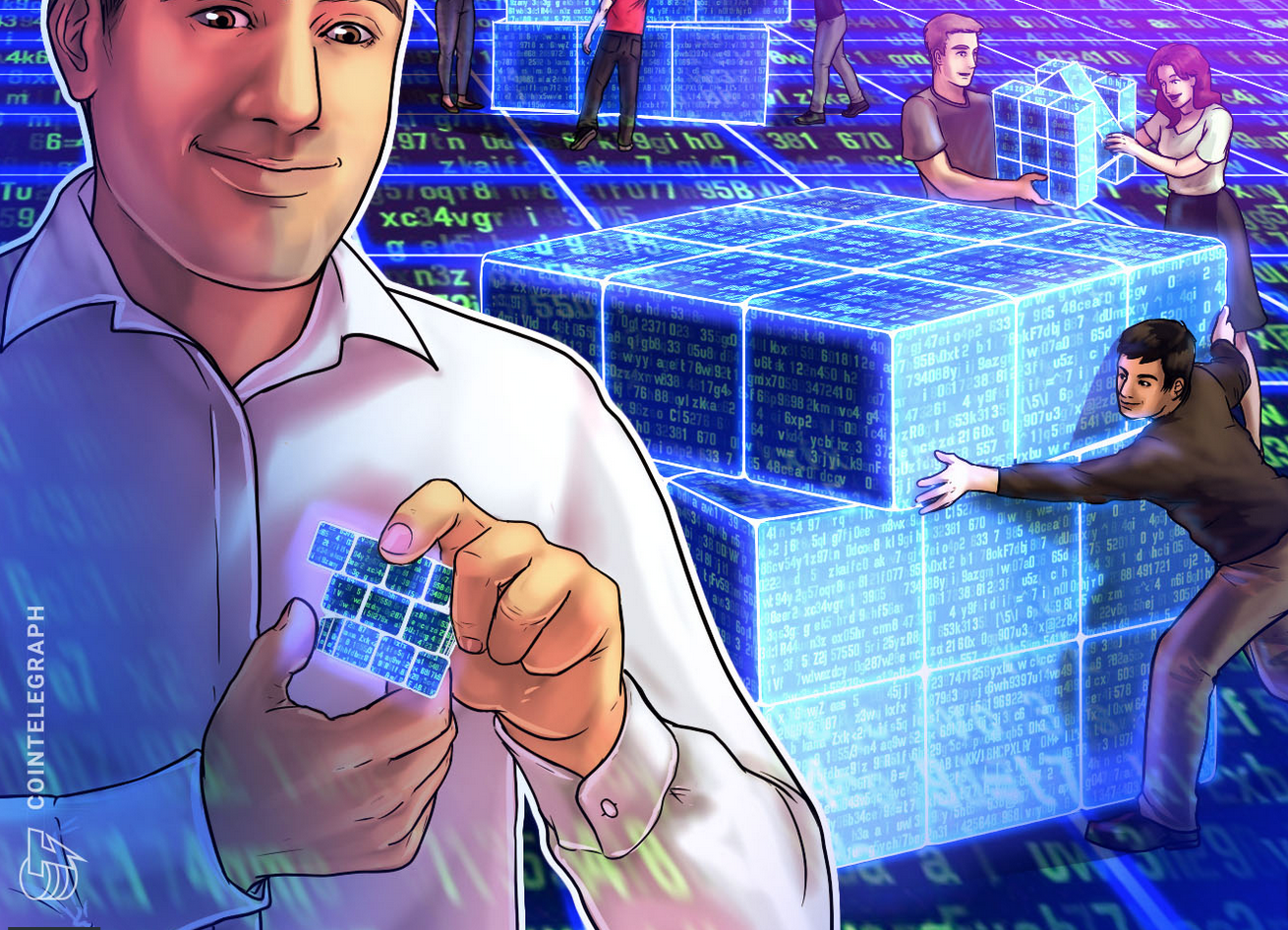
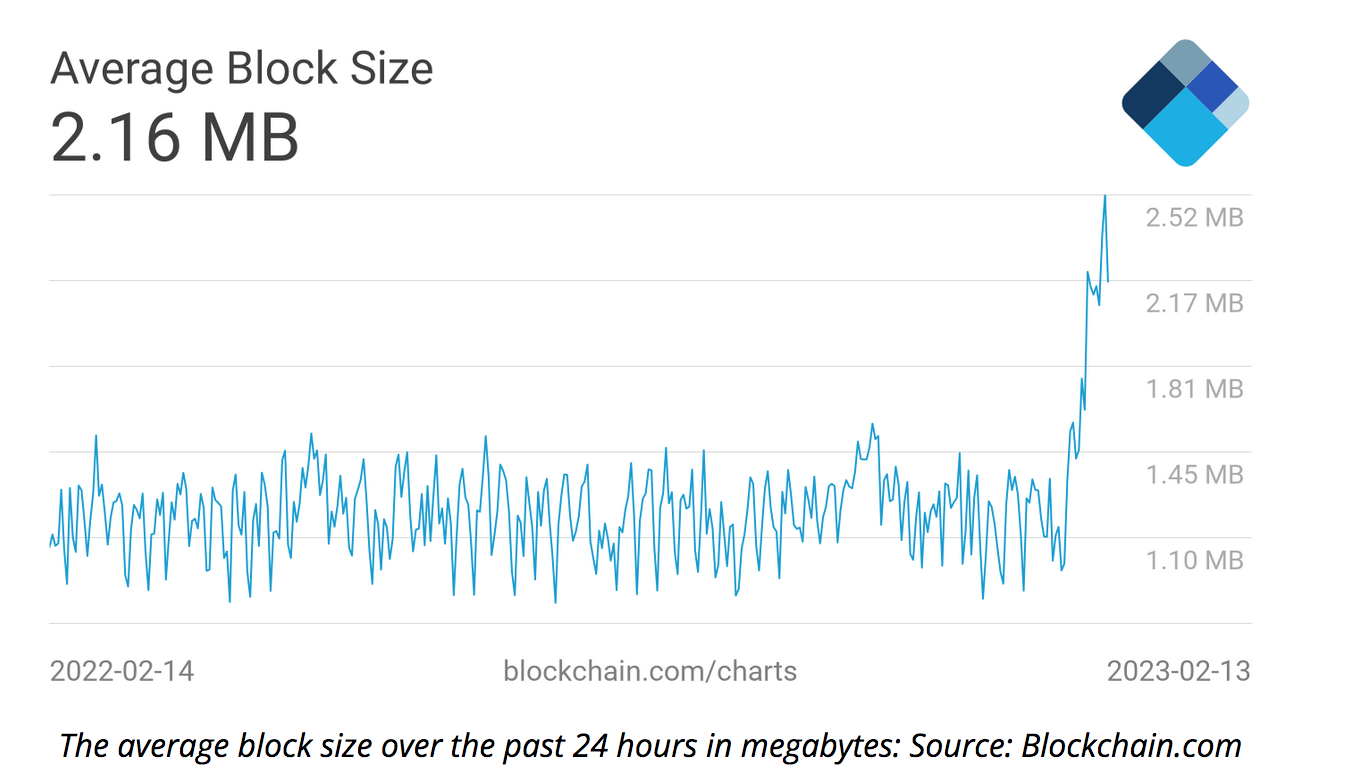

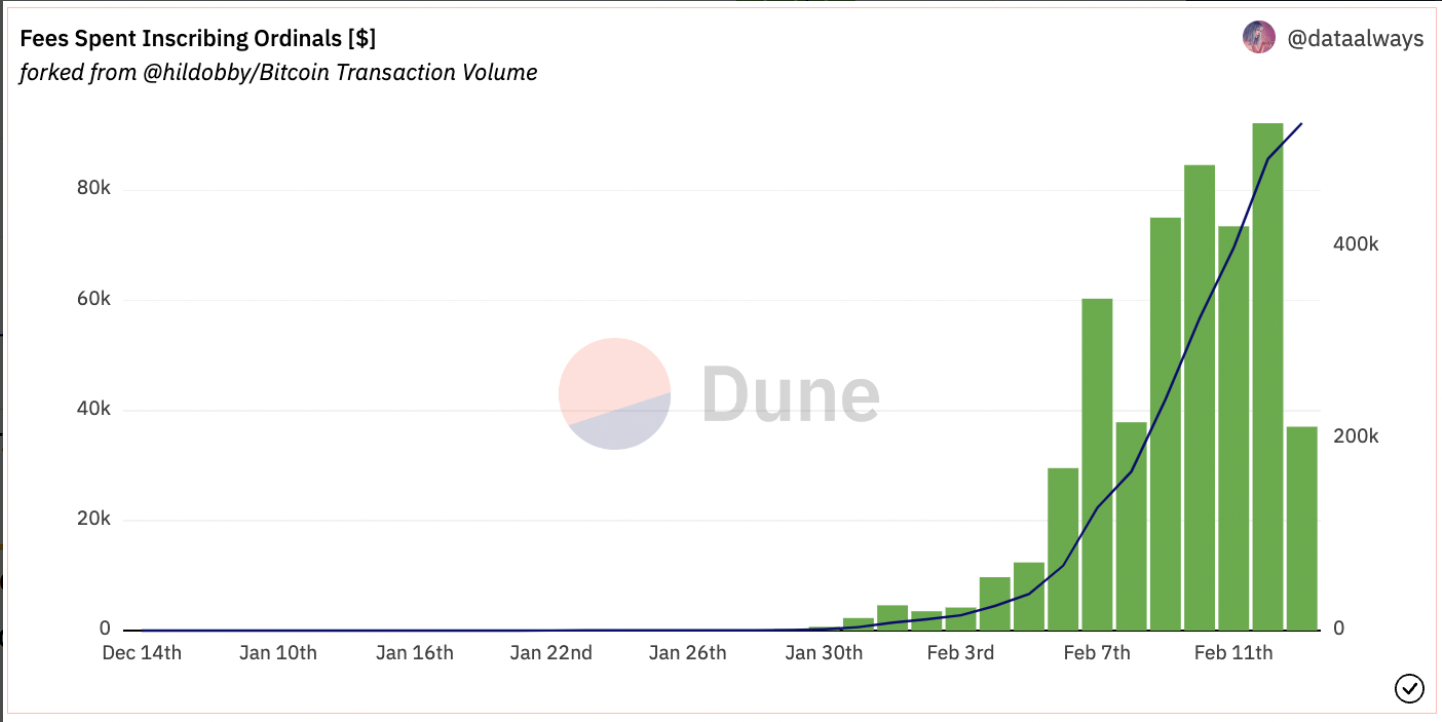
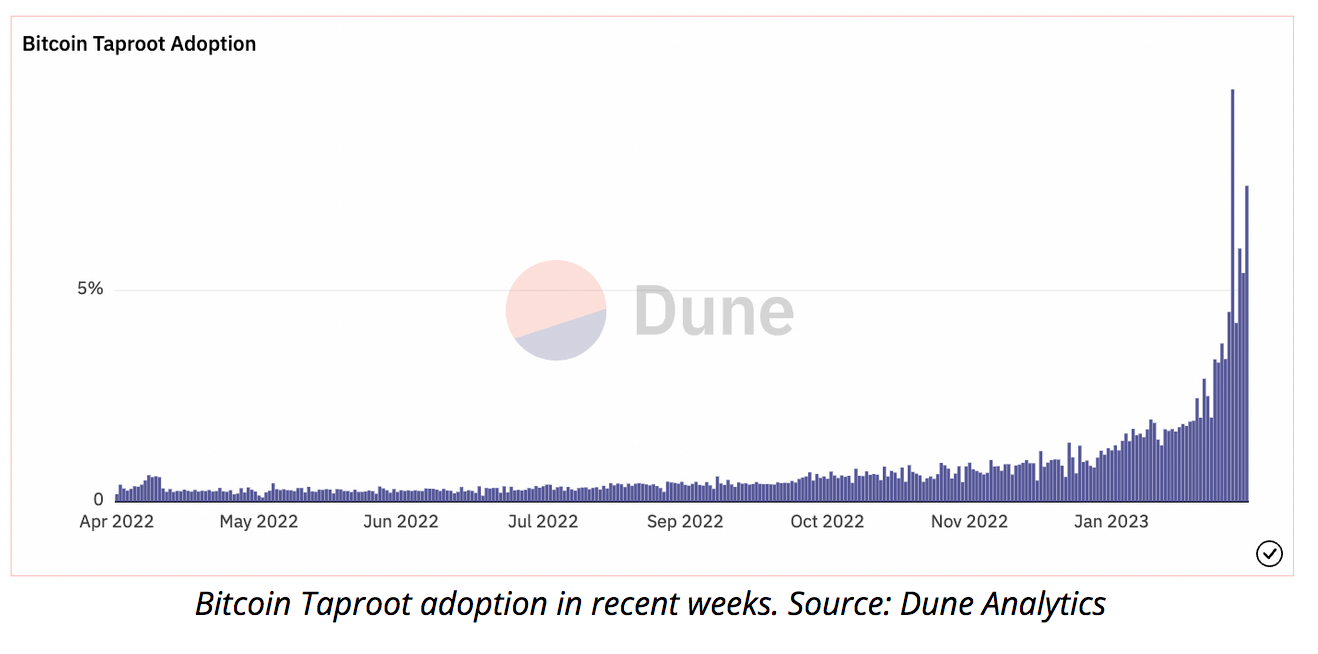
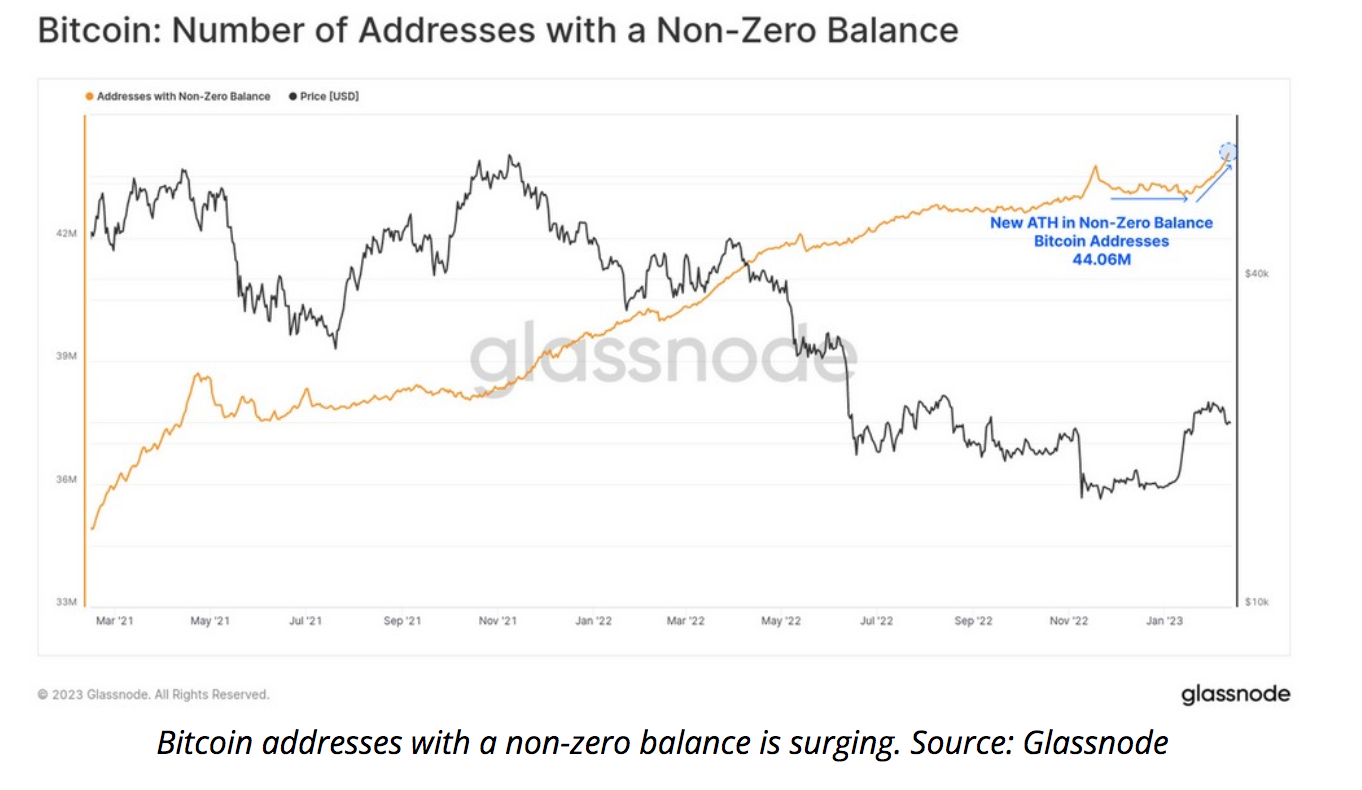

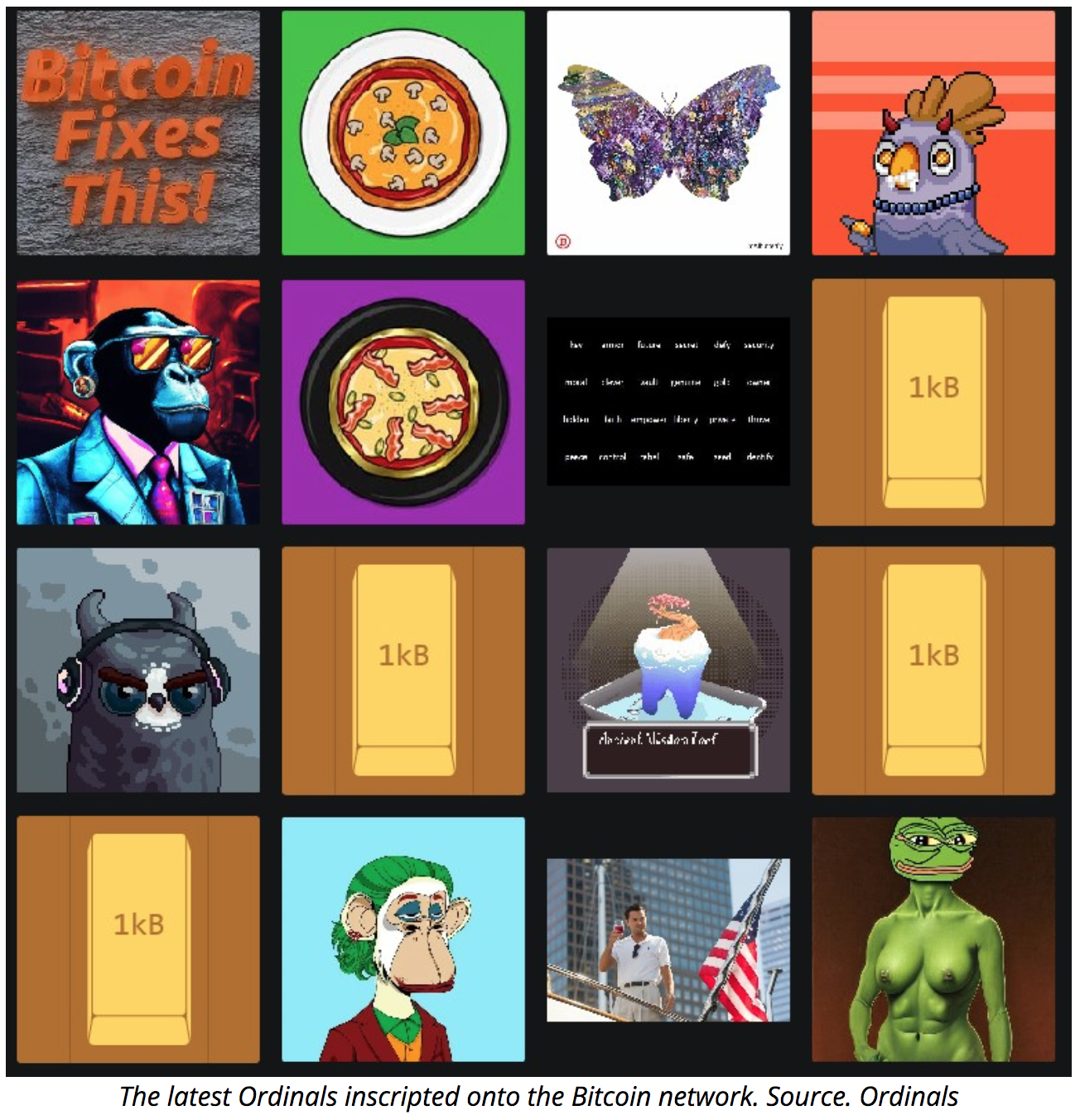
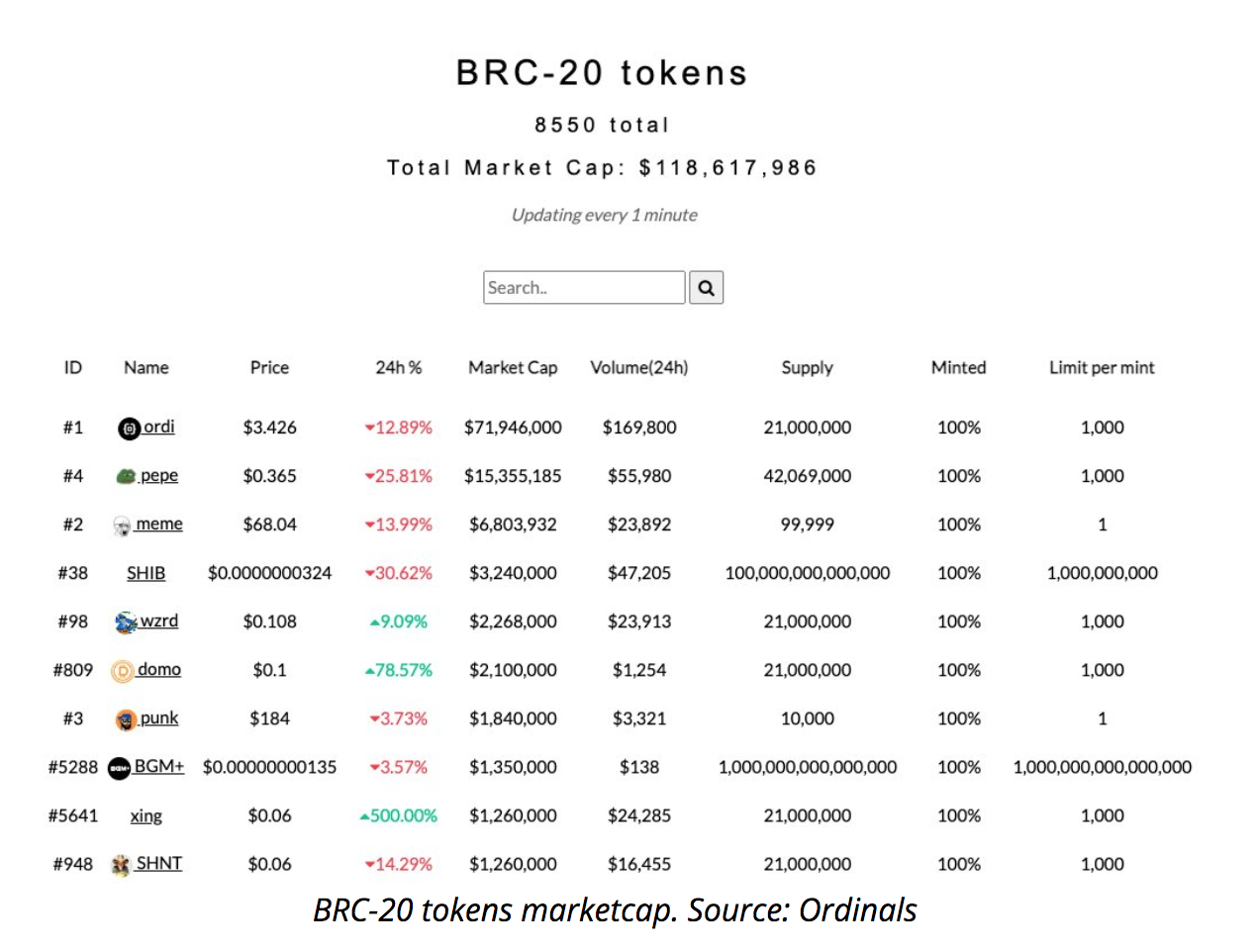
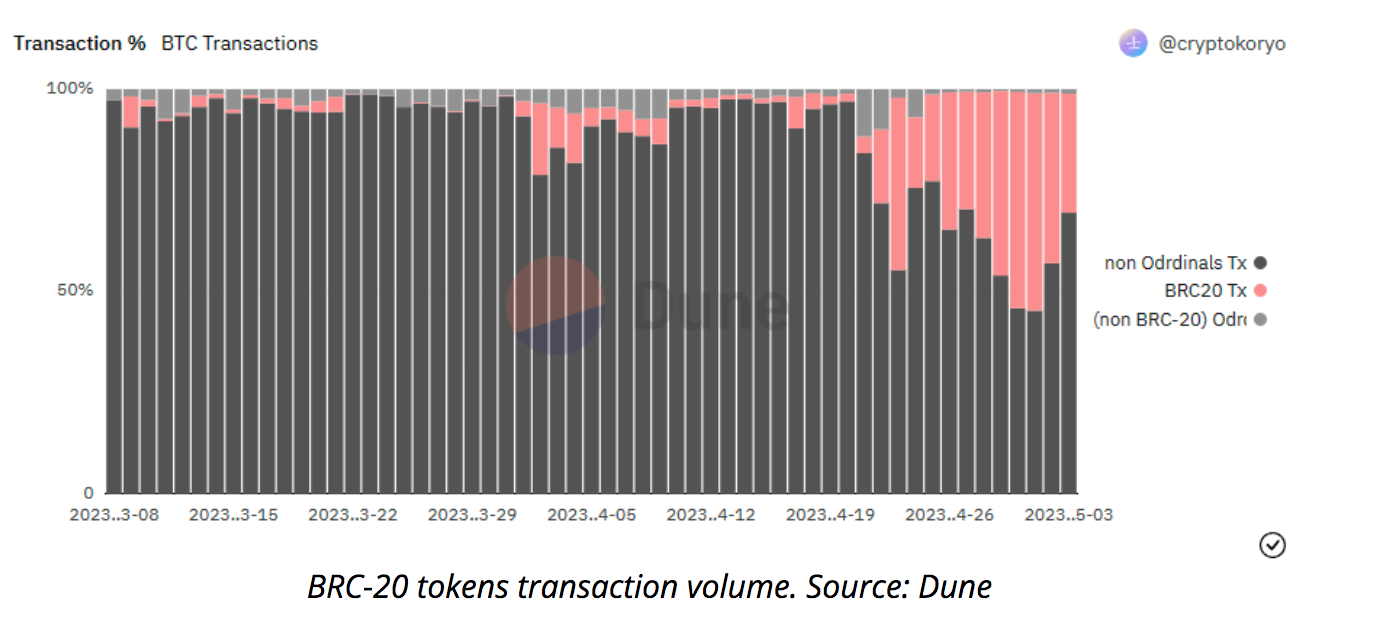

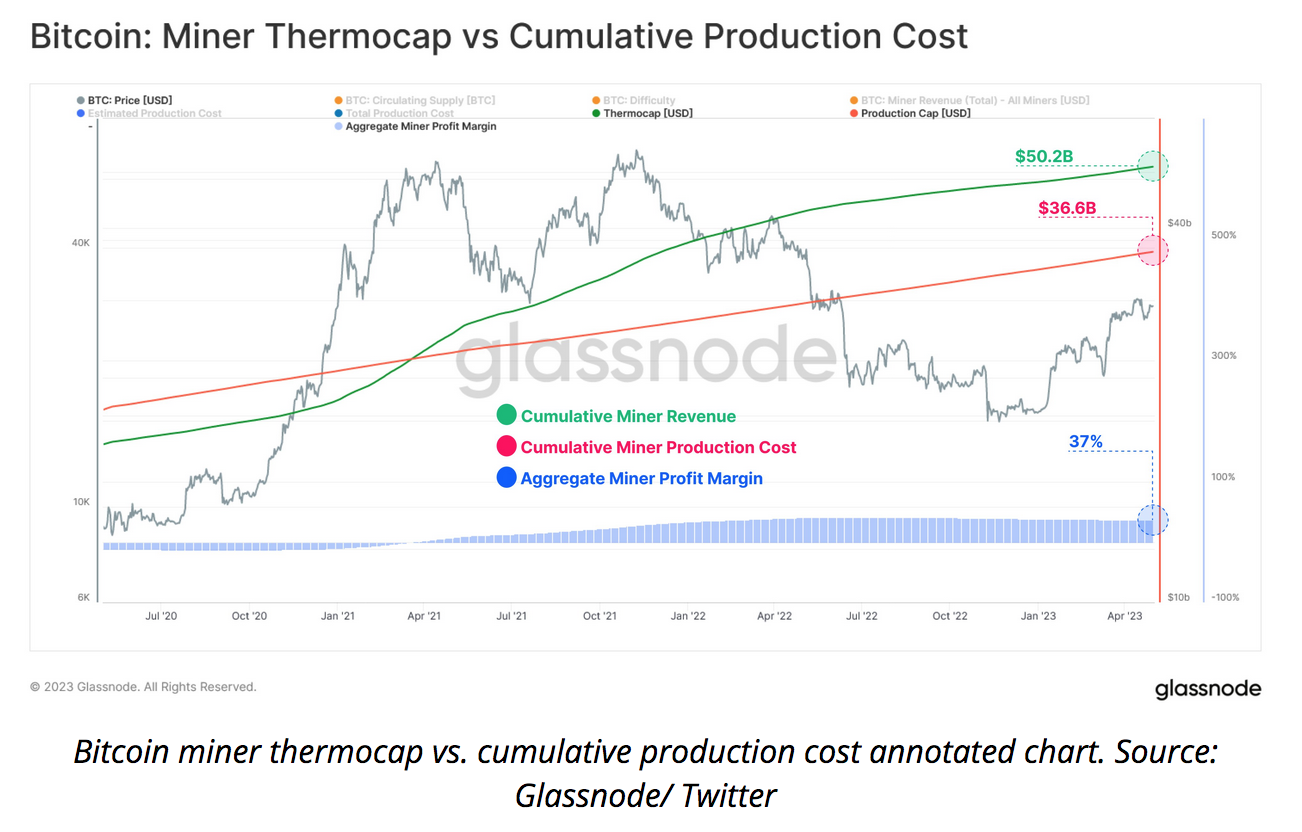
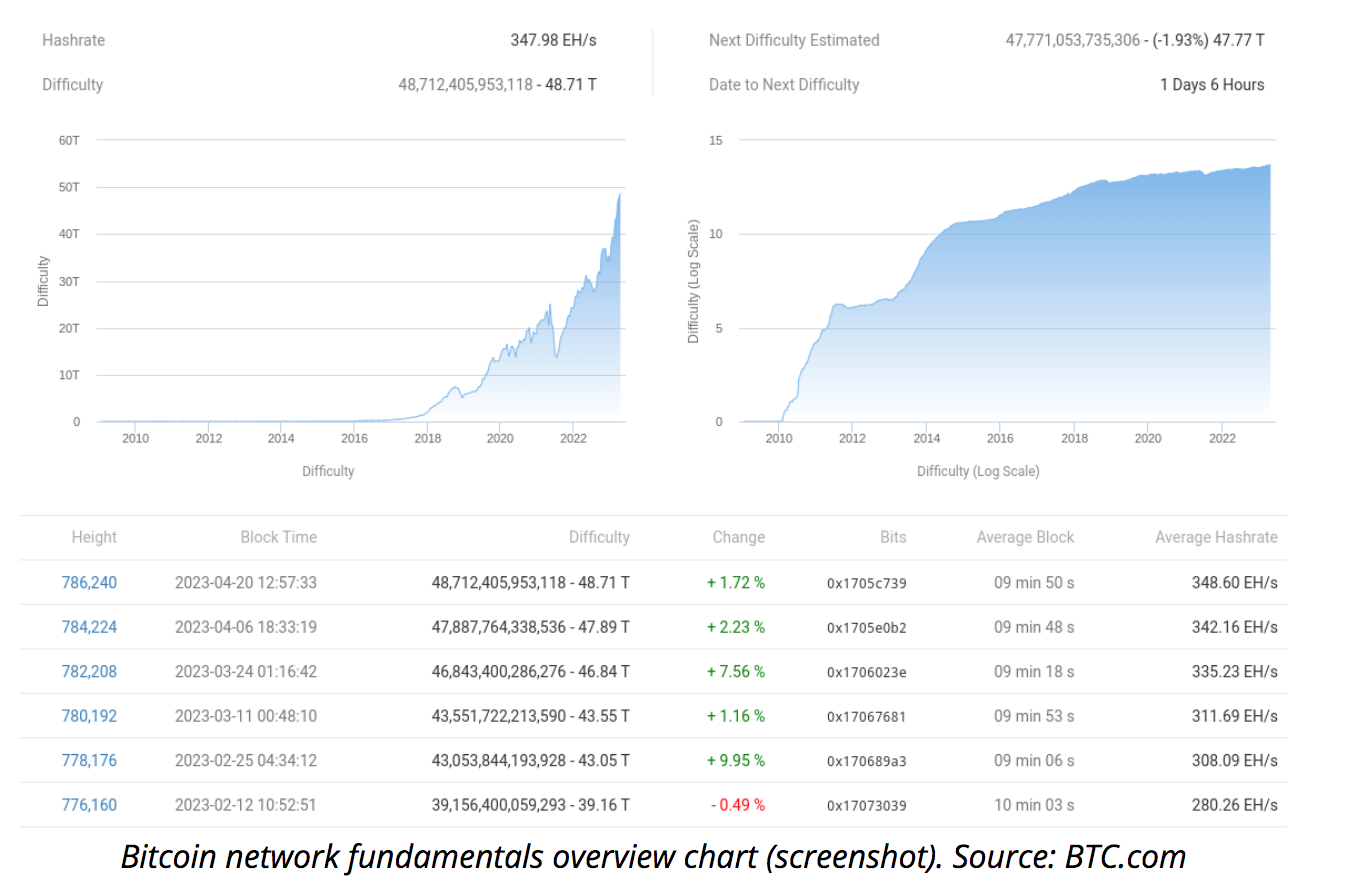
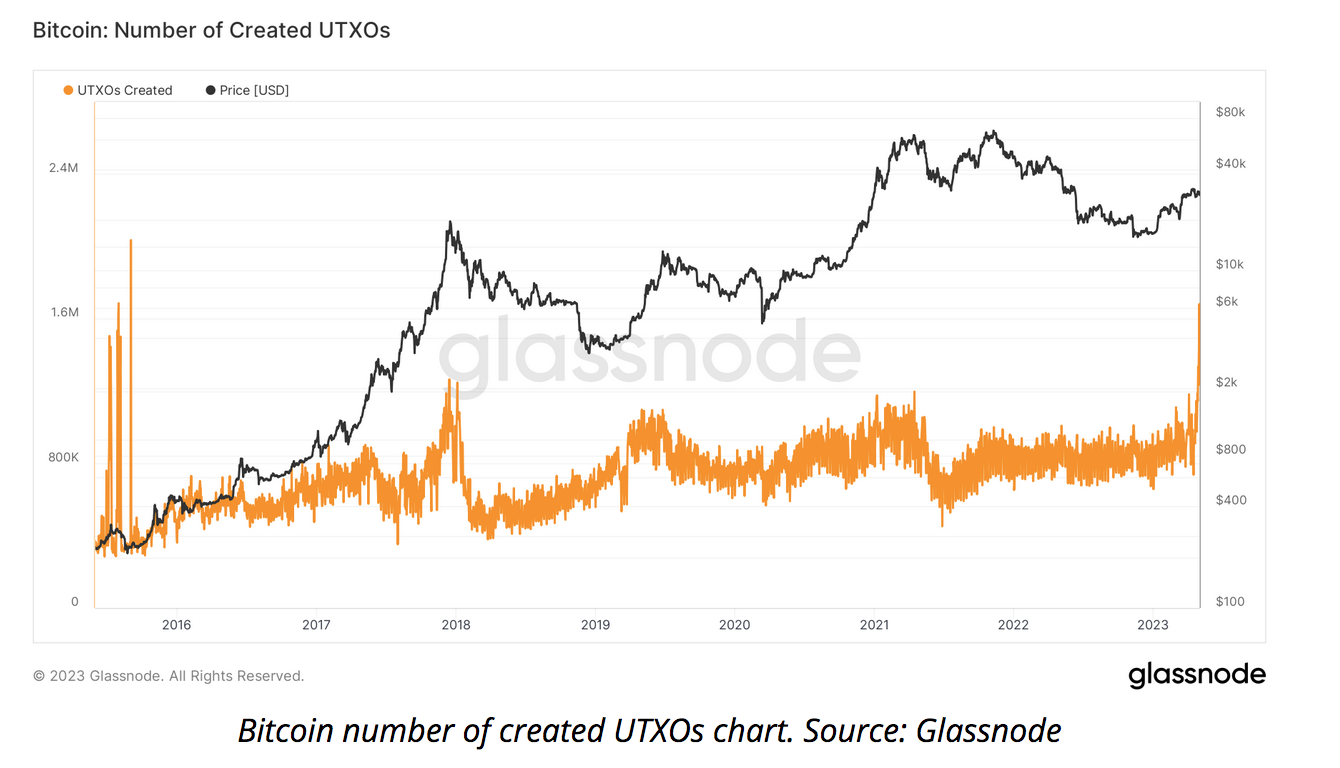
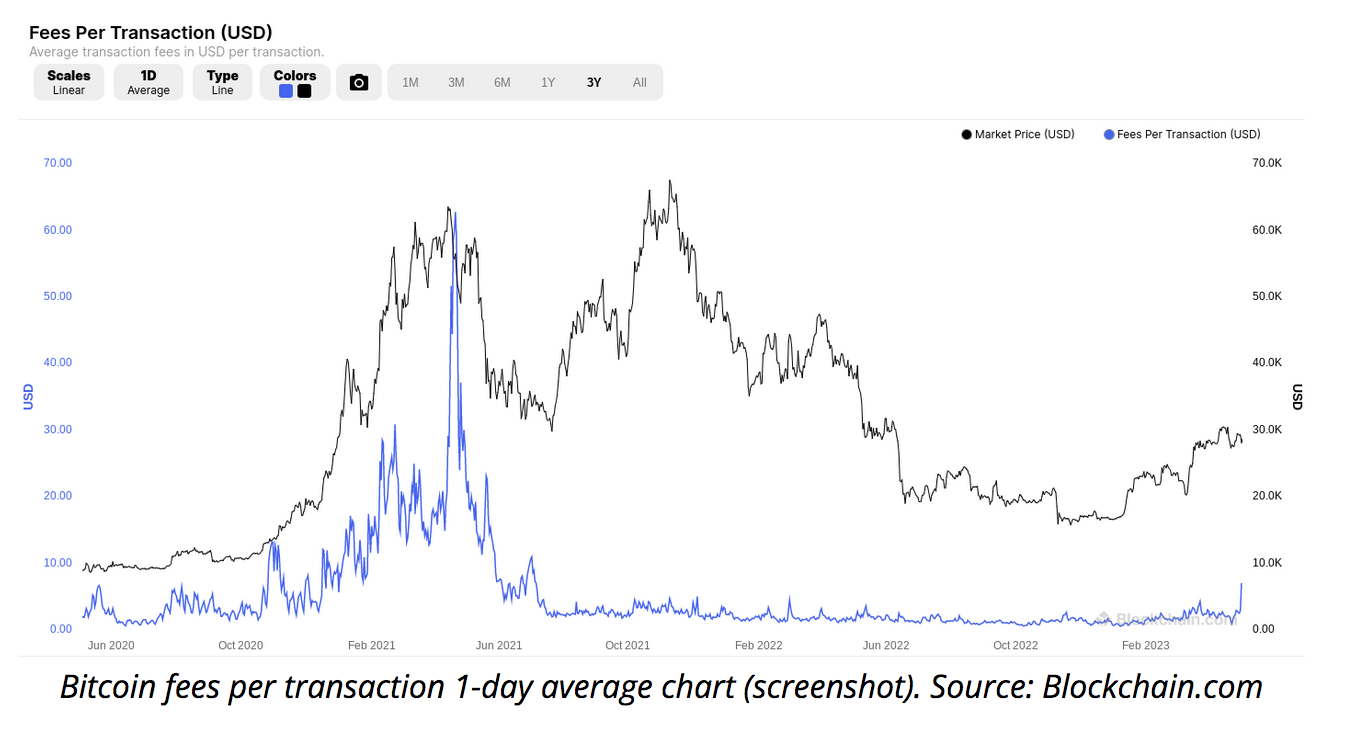
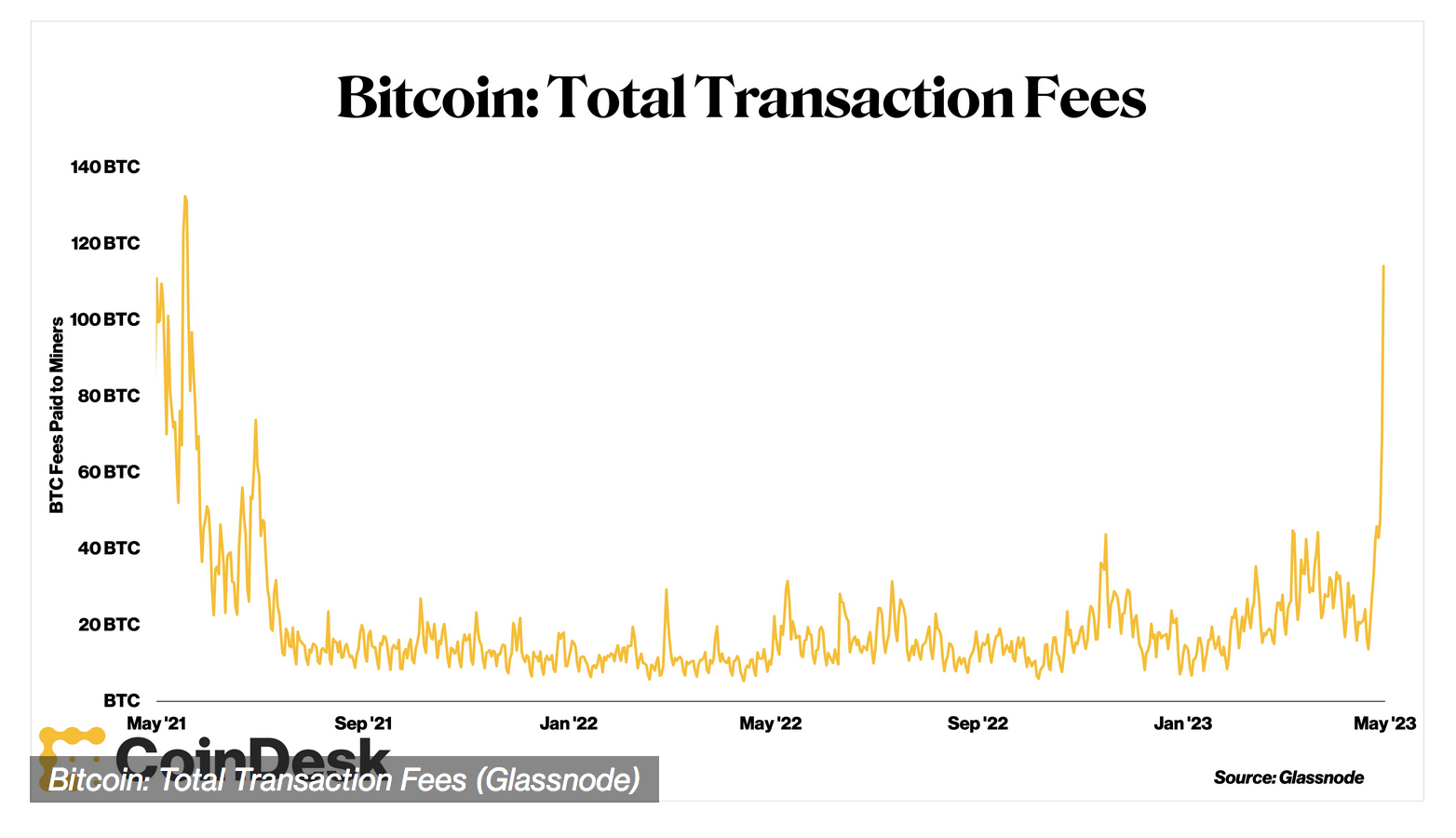
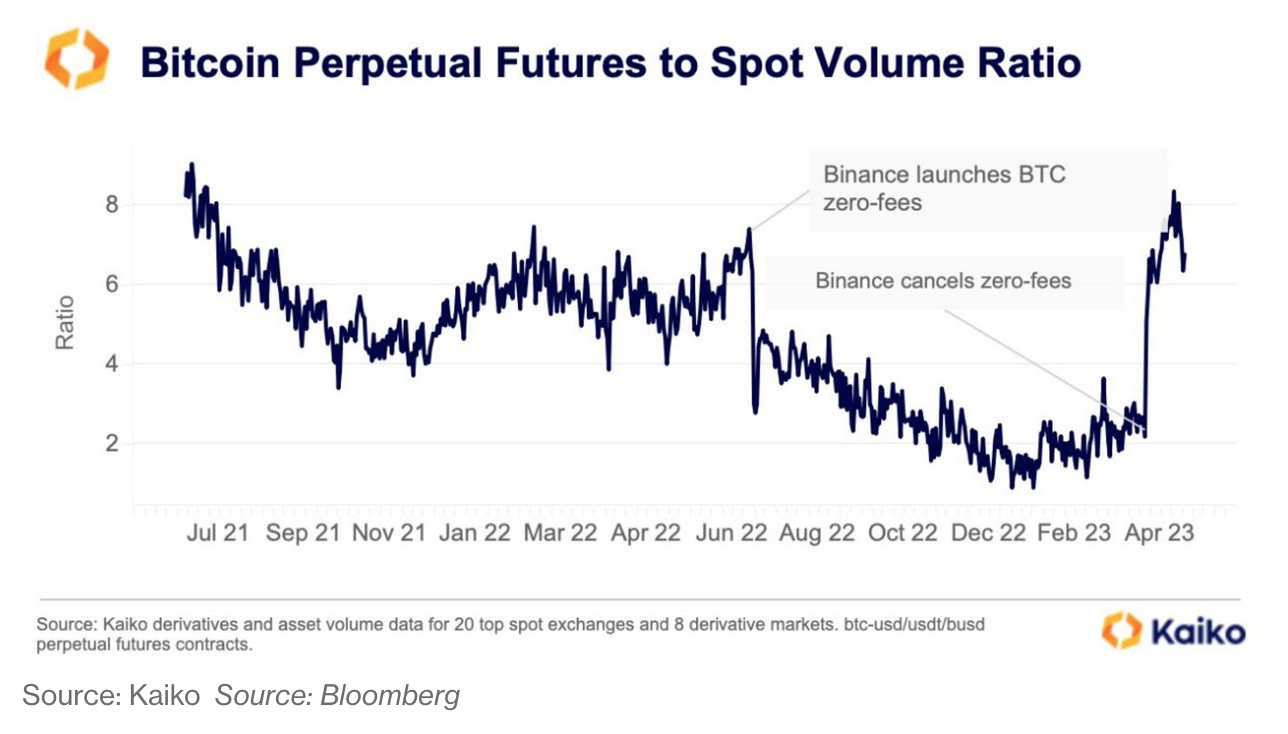
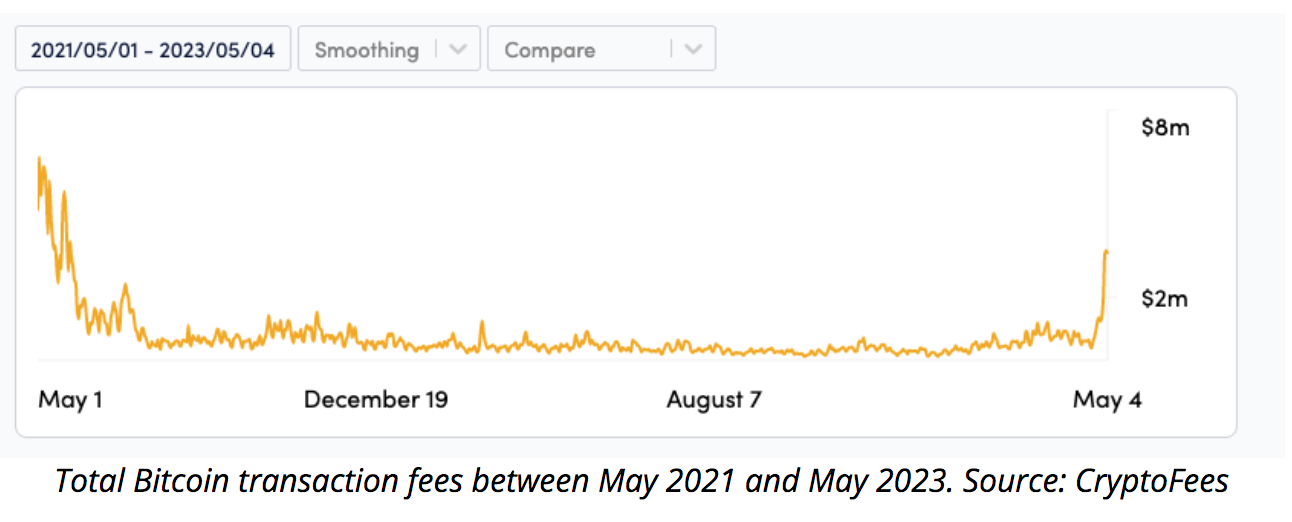


Leave a Reply
You must be logged in to post a comment.